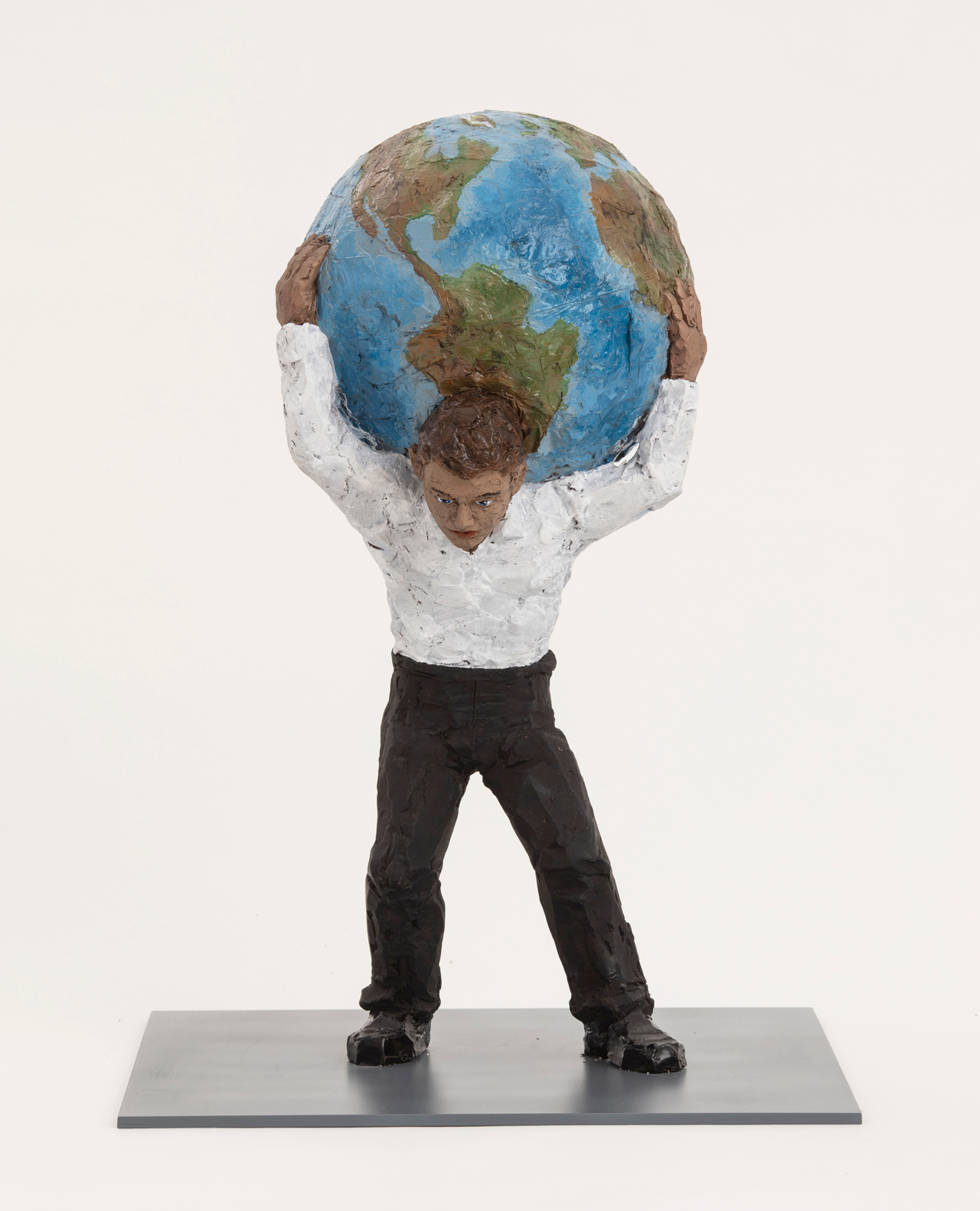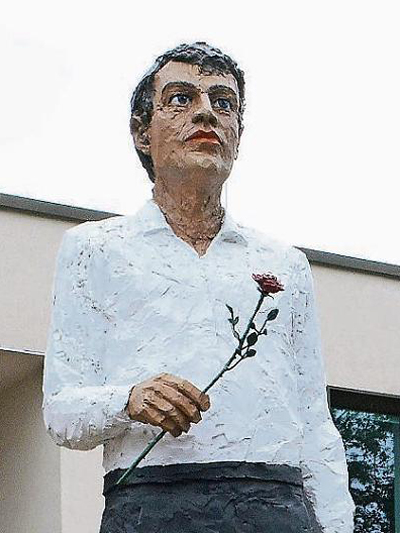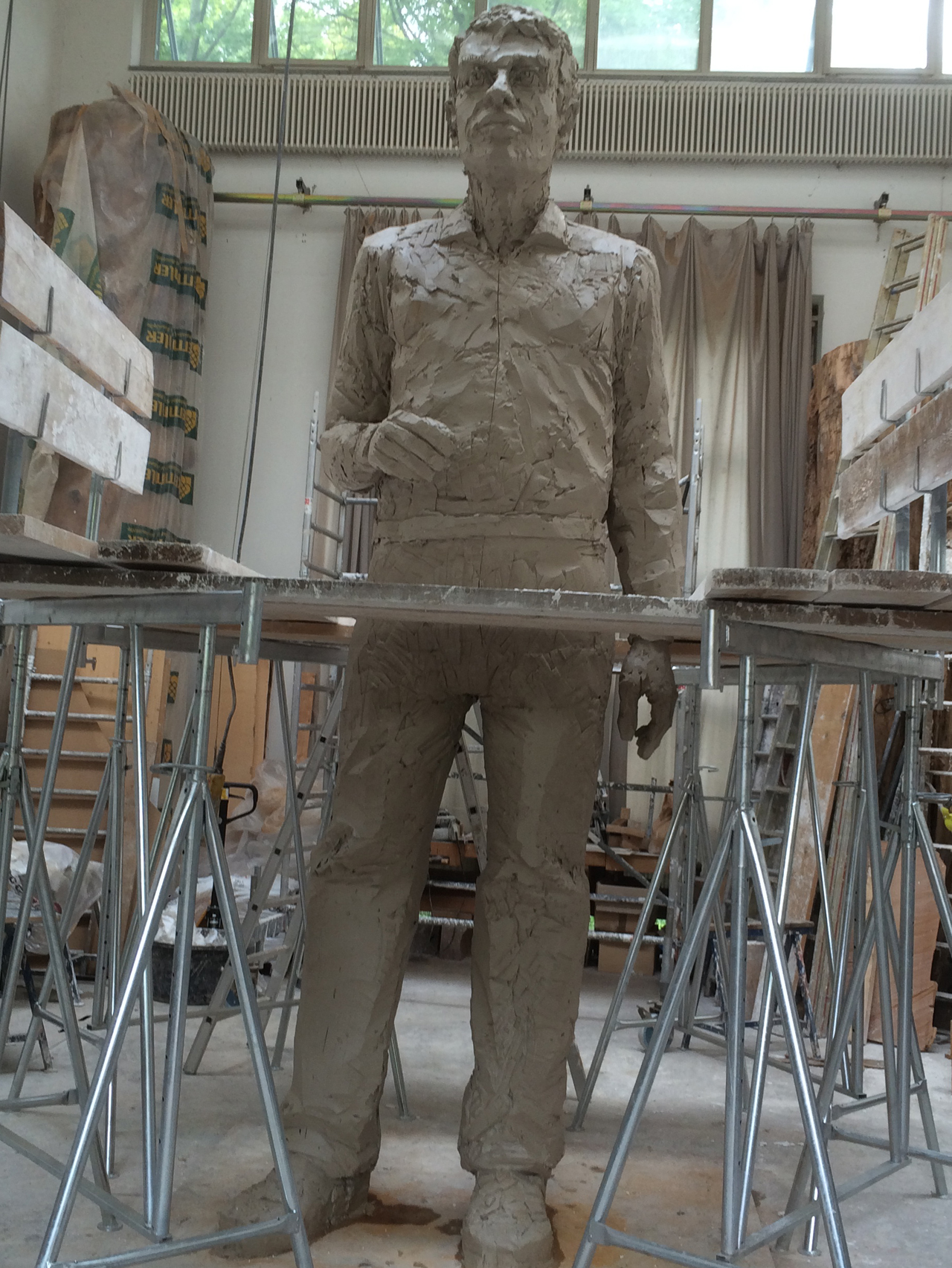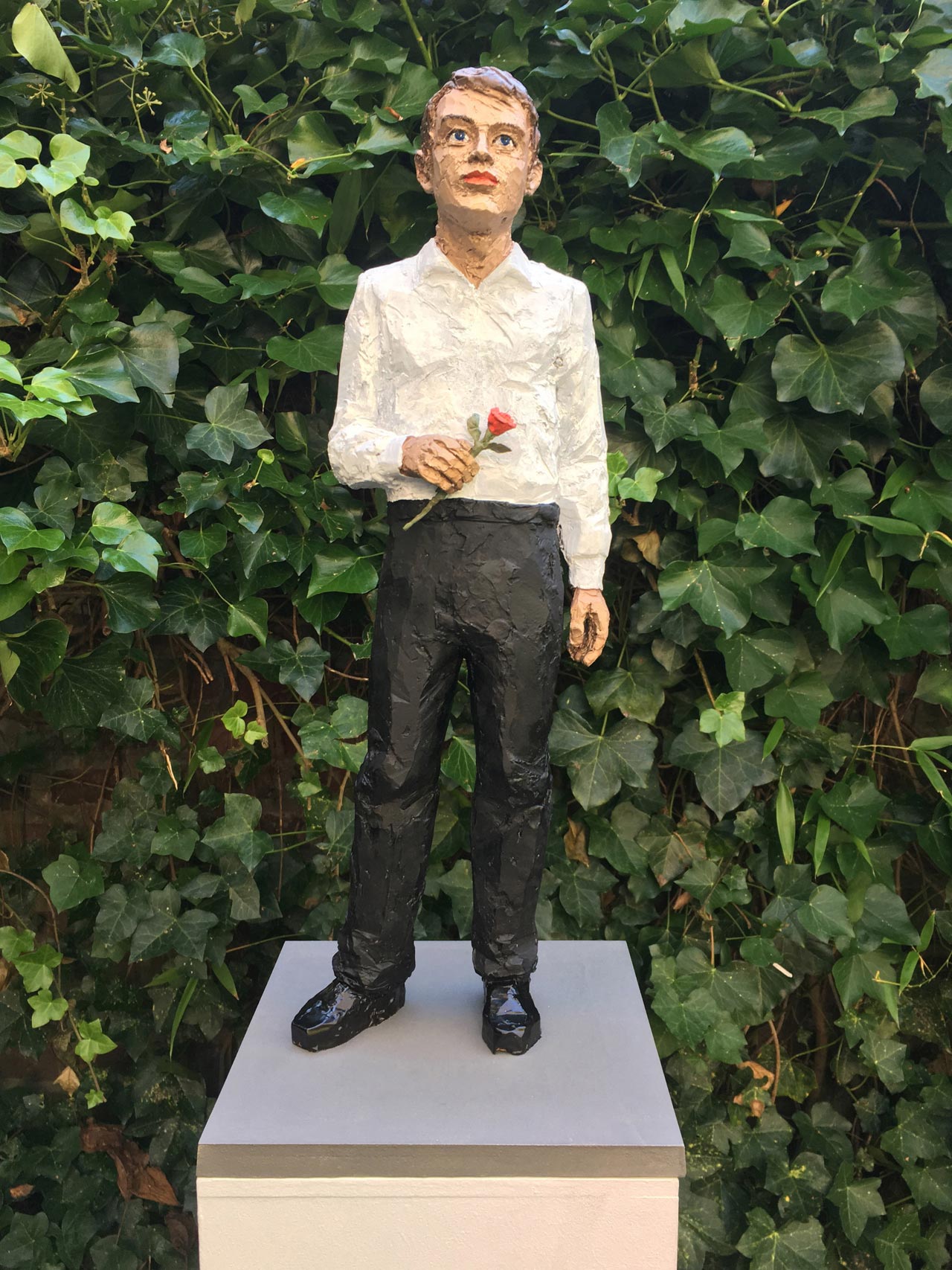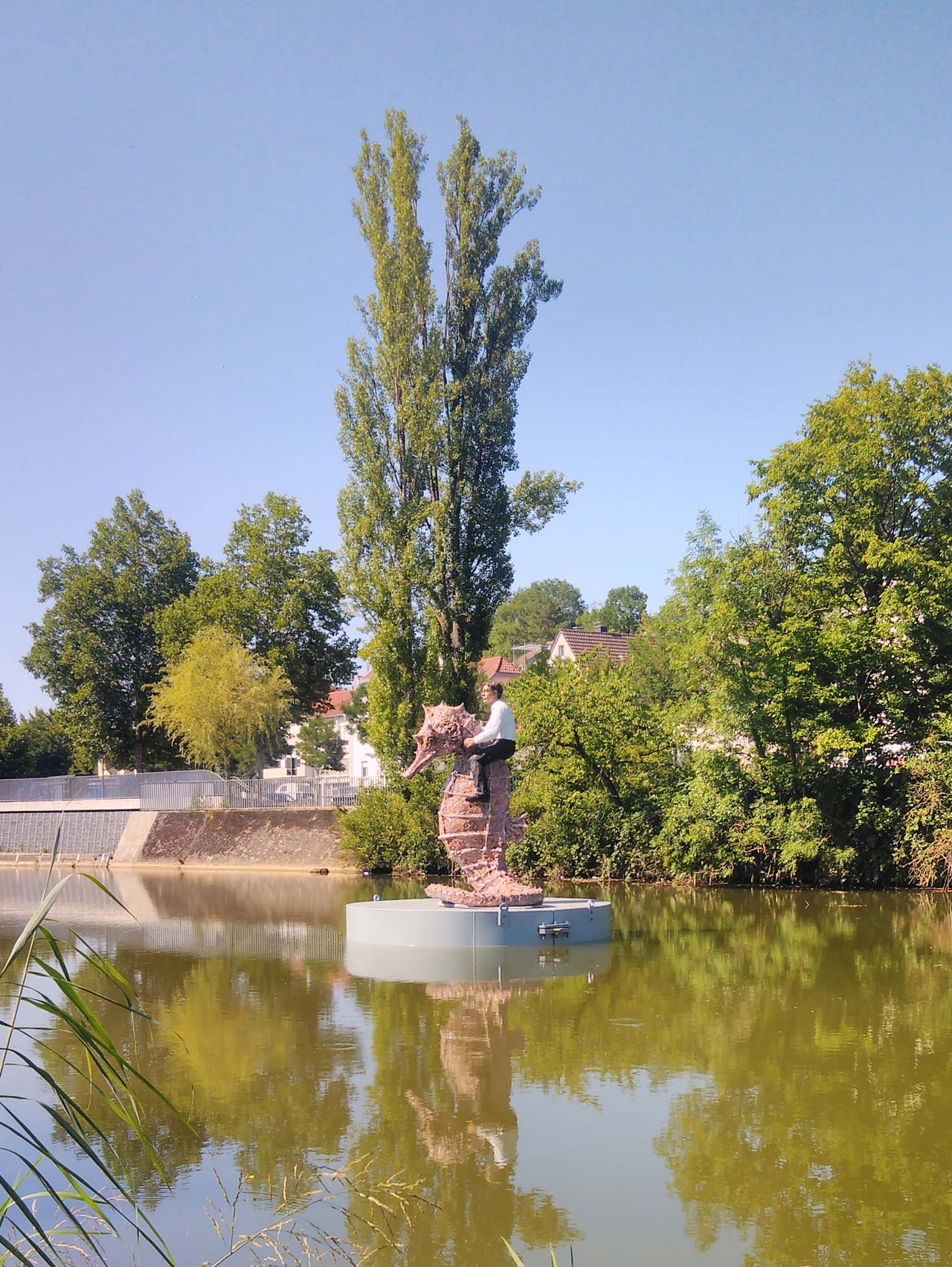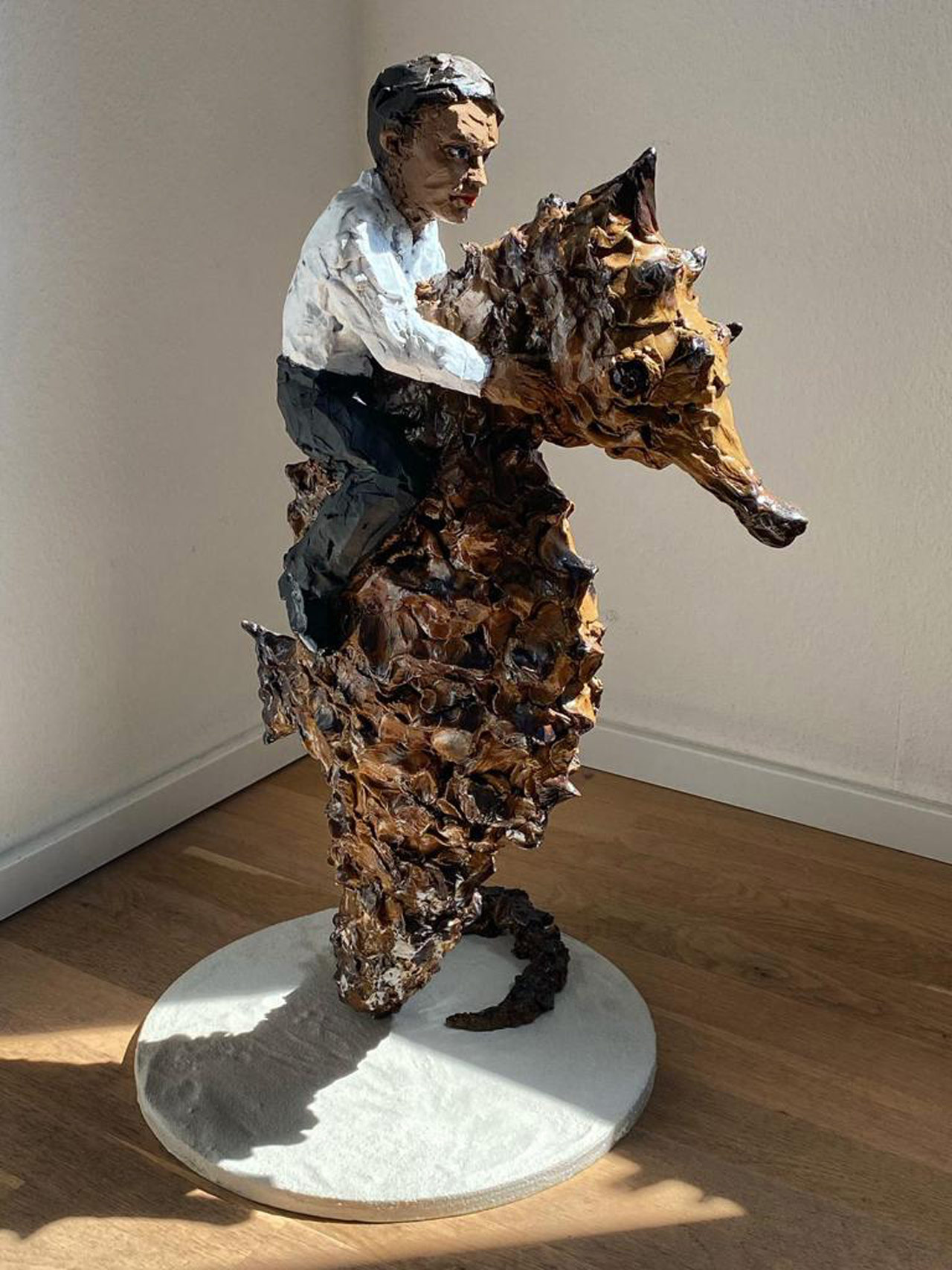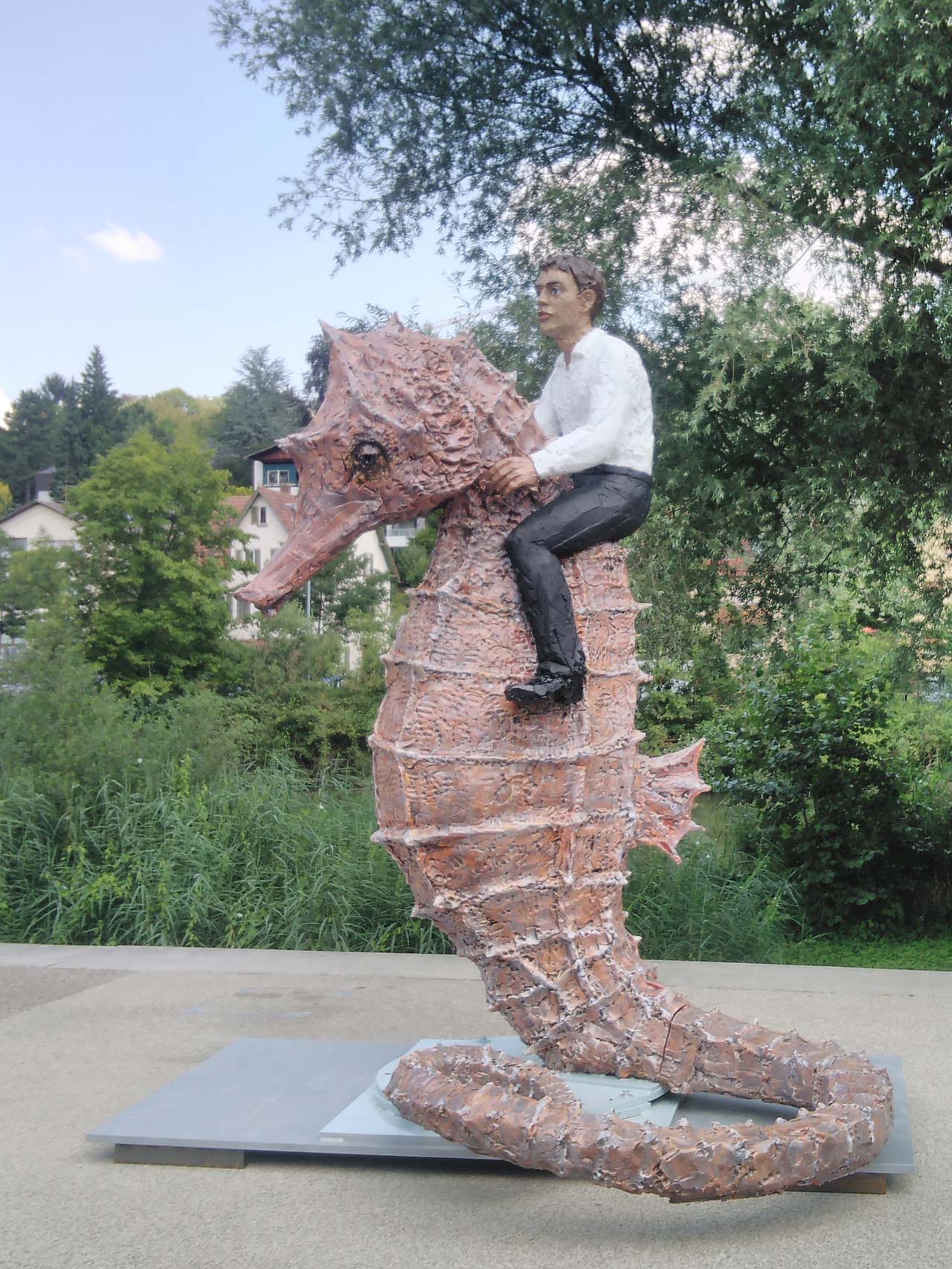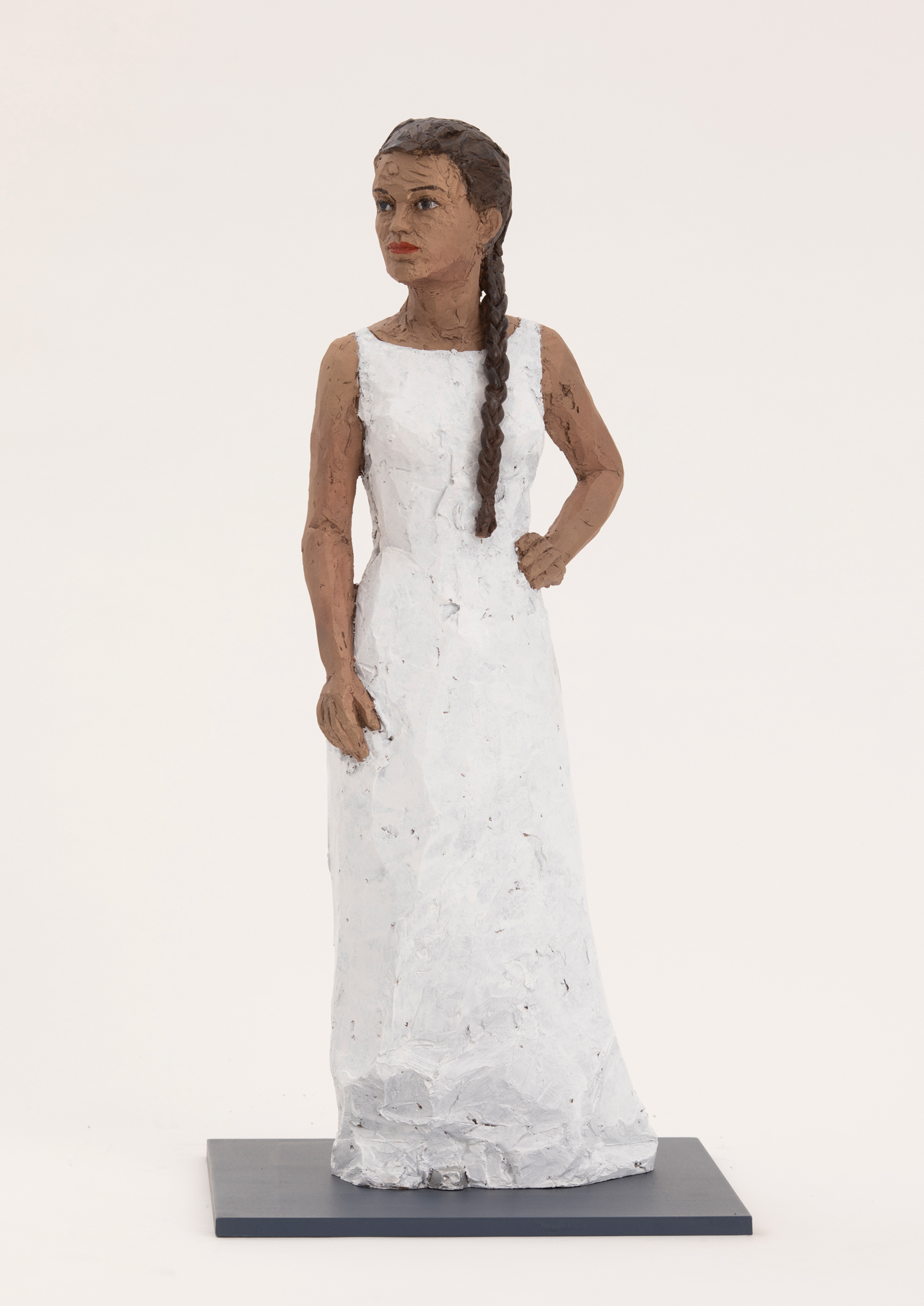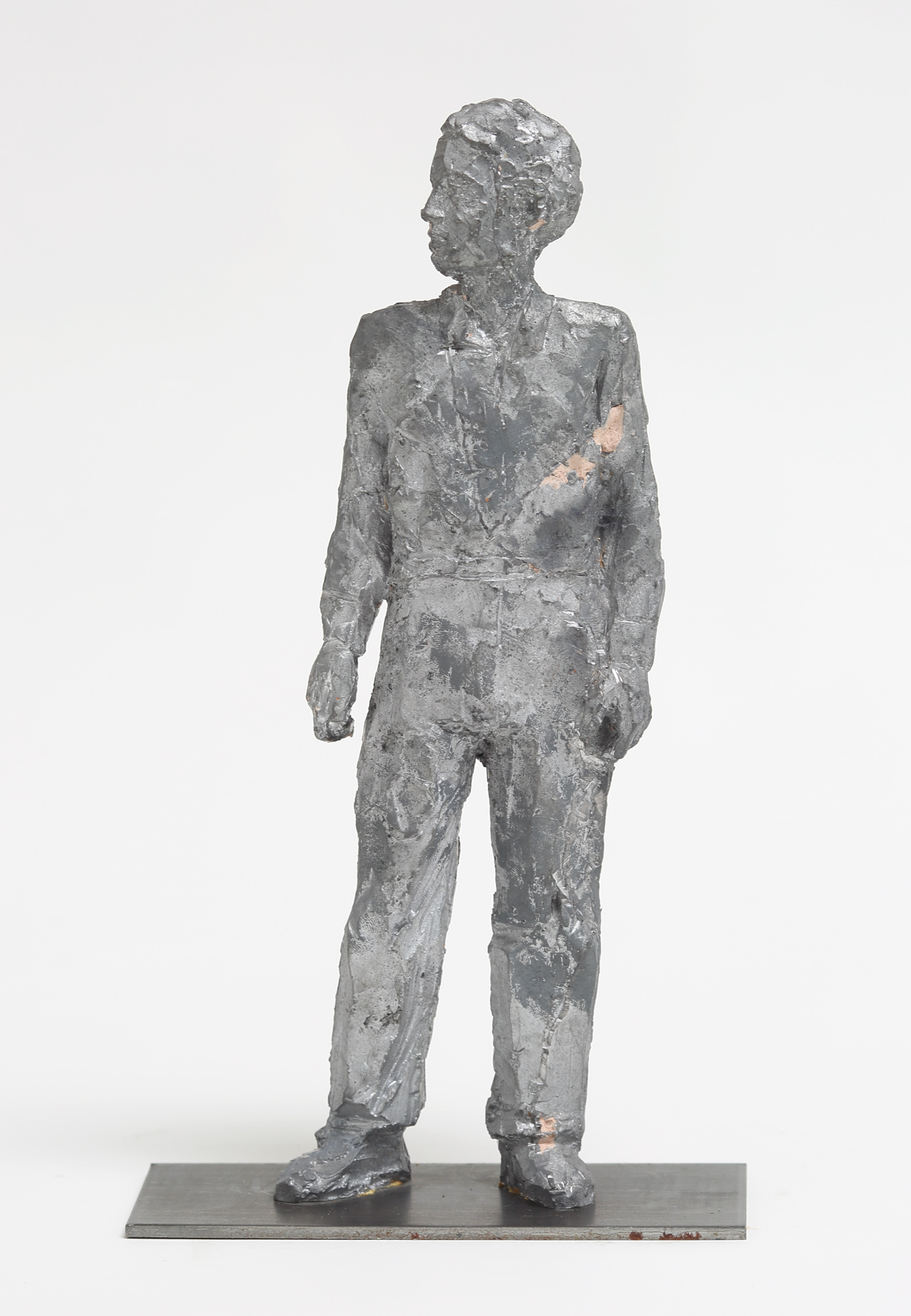Stephan Balkenhol - history & interesting facts
The year 1992 marks the begin of the exciting, versatile and inherently consistent new oeuvre of the artist Stephan Balkenhol: the bronze editions! His funny bronze sculpture titled "Humpty-Dumpty", which is not even 20cm tall, has been cast a total of 8 times, thus officially warranting its status of "edition". As the first cast, this sculpture is listed in the official catalog raisonn" of bronze editions.
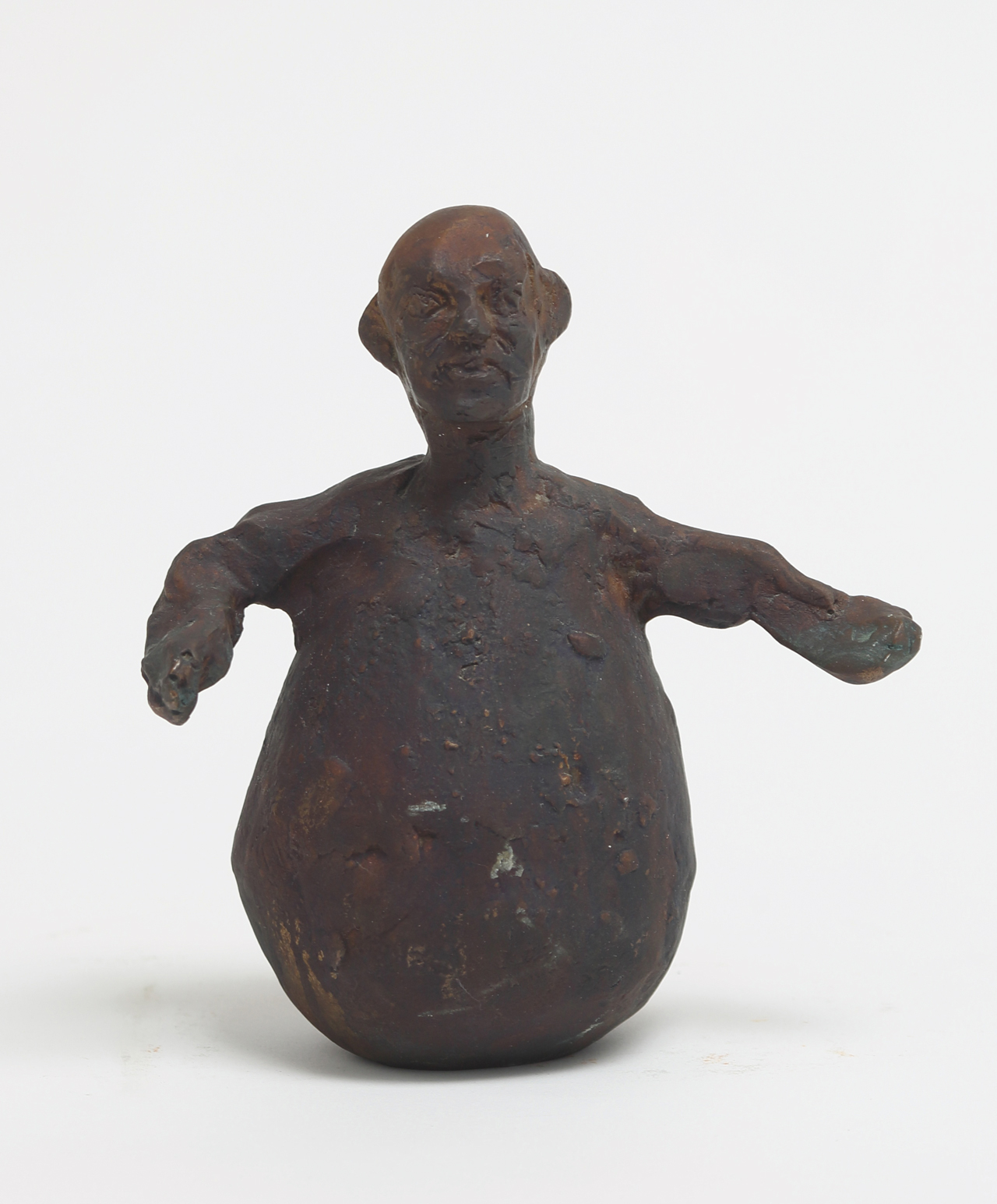
Who could have known back then how many great subjects, themes and projects of the most diverse form, color and design should follow to this day and beyond and become popular collectibles.
As most art lovers and fans of Balkenhol well know, the bronze editions are mainly based on "grand" role models that have been constructed in a public space or as part of charity projects and special occasions (e.g. exhibitions).
The majority of the bronze editions are " quite literally " larger than life, up to 13 meters tall and placed in various public spaces at home and abroad.
Apart from the numerous well-known bronzes in the public that have not been made into editions, we would like to present and describe a number of sculptures that, to the delight of many collectors, have now been edited into bronze editions.
From 2000 to 2002, three 2-meter casts of the beautifully titled "Mann im Hirschgeweih" were erected. These sculptures can be viewed at Andreaplatz in Hannover (painted), near Staatliche Akademie der Bildenden K"nste in Karlsruhe (unpainted) as well as in the nature preserve of Ratingen (unpainted). A big stag carrying a man in its antlers is placed on a pedestal that resembles a table. The scene depicts man and animal in playful togetherness. Has the stag put him on" What is the little man doing in its antlers" The tension between the irritating appearance and its inherent casualness is so great that a resolution of the scene seems improbable. There is no closure, only questions that give rise to stories, which " in typical Balkenhol fashion " cannot be confirmed.
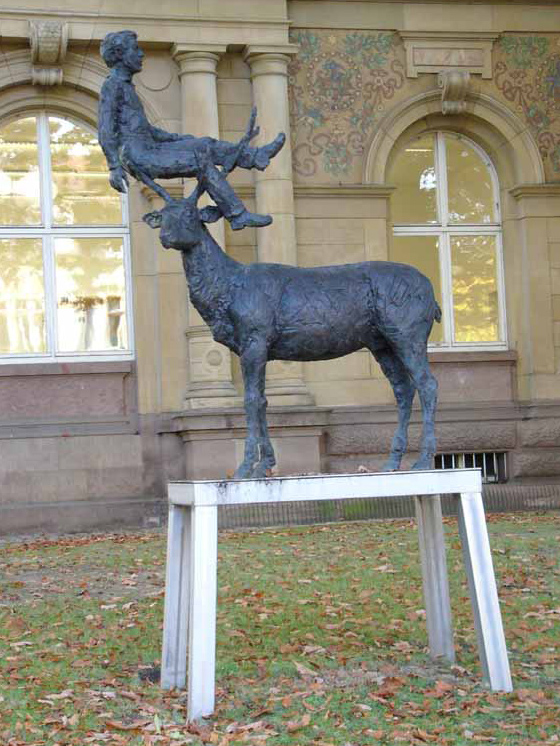
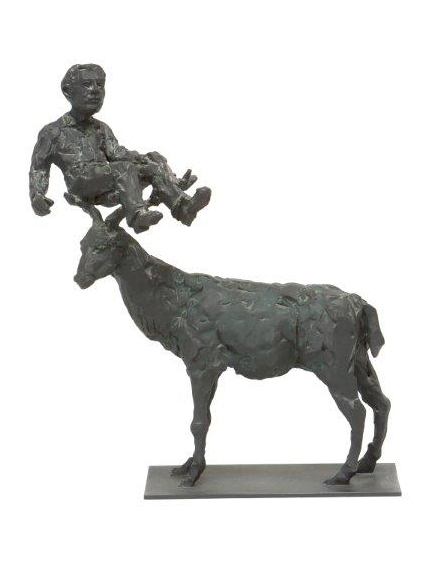
In 2001, another animalistic sculpture was placed in a prominent location. The "Mann mit Giraffe" can already be seen from a distance, right in front of Hagenbecker Tierpark, and it serves as the landmark for the Hamburger Zoo. Among the people of Hamburg, it is one of the most famous and popular sculptures. At a stately height of 8,20 meters and a weight of 2,5 tons, it is one of the largest artworks of Stephan Balkenhol built in a public space. This cheerful, lighthearted display is not only an eyecatcher and photo subject in high demand, but also a beautiful symbol of harmonious coexistence of man and animal.
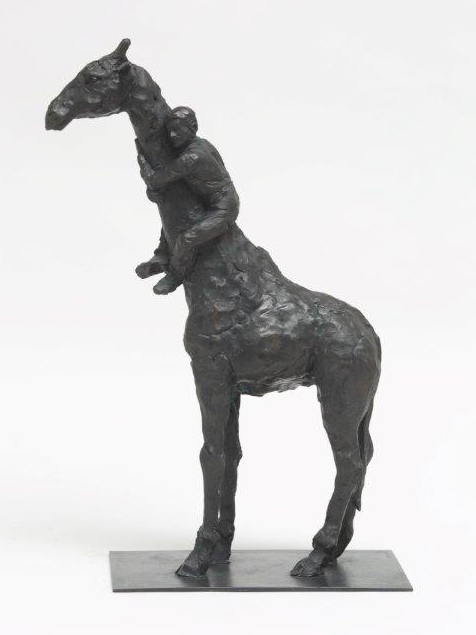
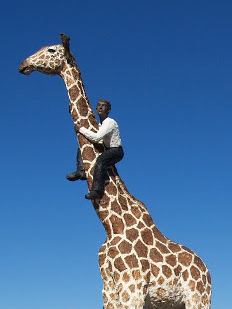
Let us take a look at the baroque gardens in Kleve opposite the Museum Kurhaus Kleve. Here, "Der Neue Eiserne Mann" gazes into the distance at a height of almost 13 meters. In memory of Prince Johann Moritz von Nassau-Siegen, the statue was revealed on his 400th birthday on June 18th 2004. He had planned the botanical gardens during his lifetime, and the previously erected statue "Eiserner Mann mit Schwert" had been destroyed in 1794 by French revolutionary troops. Balkenhol carried over the original structure of the sculpture and strikingly installed his bronze on a golden sphere.
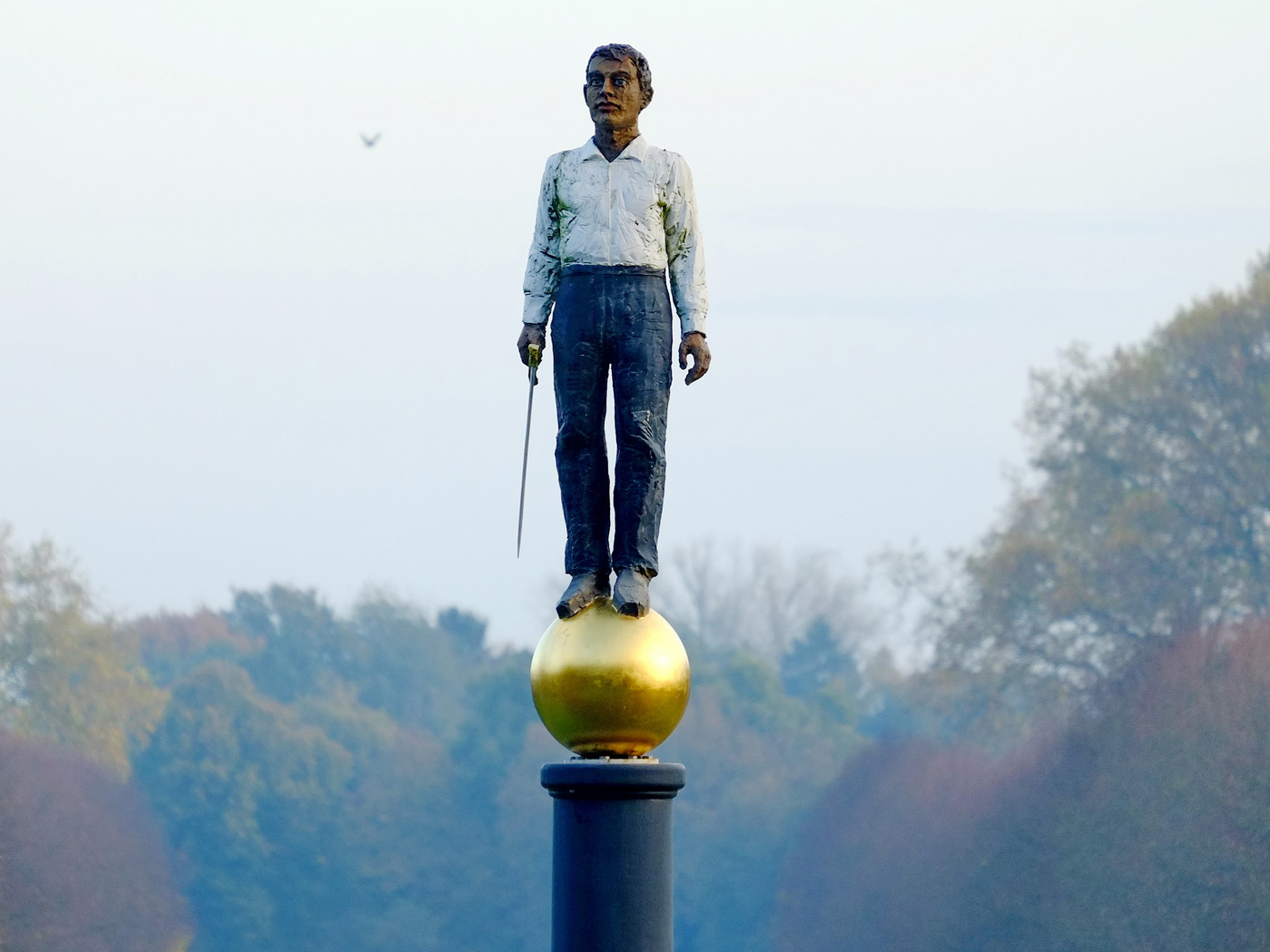
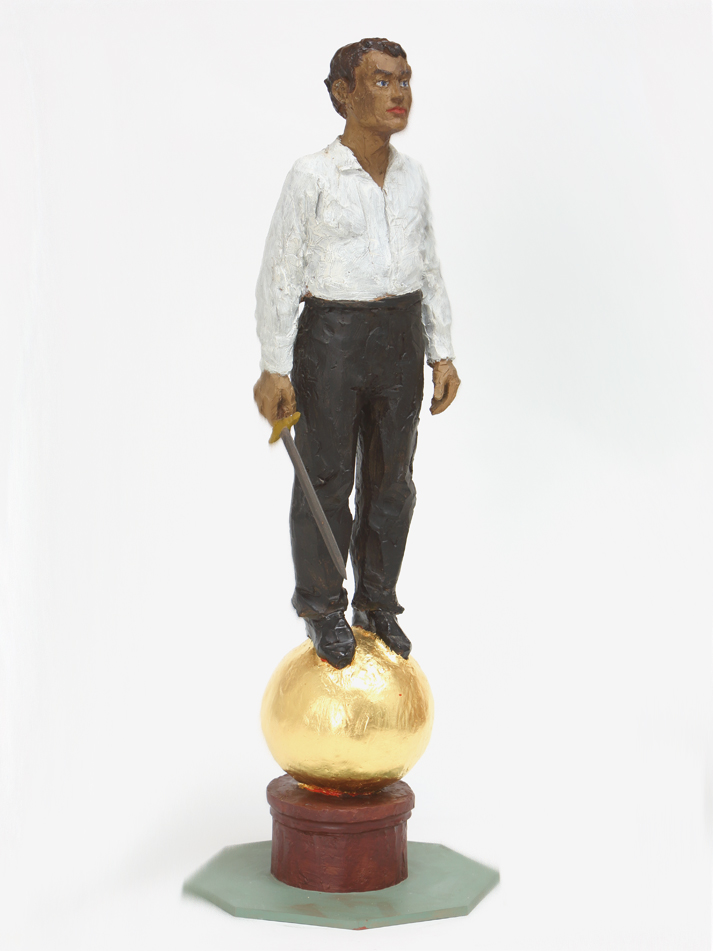
In 2007, the motif of the golden sphere reappeared in Salzburg. This sculpture is also set in an excellent location, attracting countless visitors seeking to take photos of it. The male figure standing on a giant golden sphere is located on Kapitelplatz in Salzburg. The sculpture consists of a gilded two-ton sphere with a diameter of five meters. At a height of nine meters, a 300-kilogram male figure made of bronze stands on top of the sphere. In colloquial speech, it is also known as "Balkenhol-Mozartkugel". The project was initiated and realized by the Salzburg Foundation as part of the Walk of Modern Art/Kunstprojekt Salzburg.
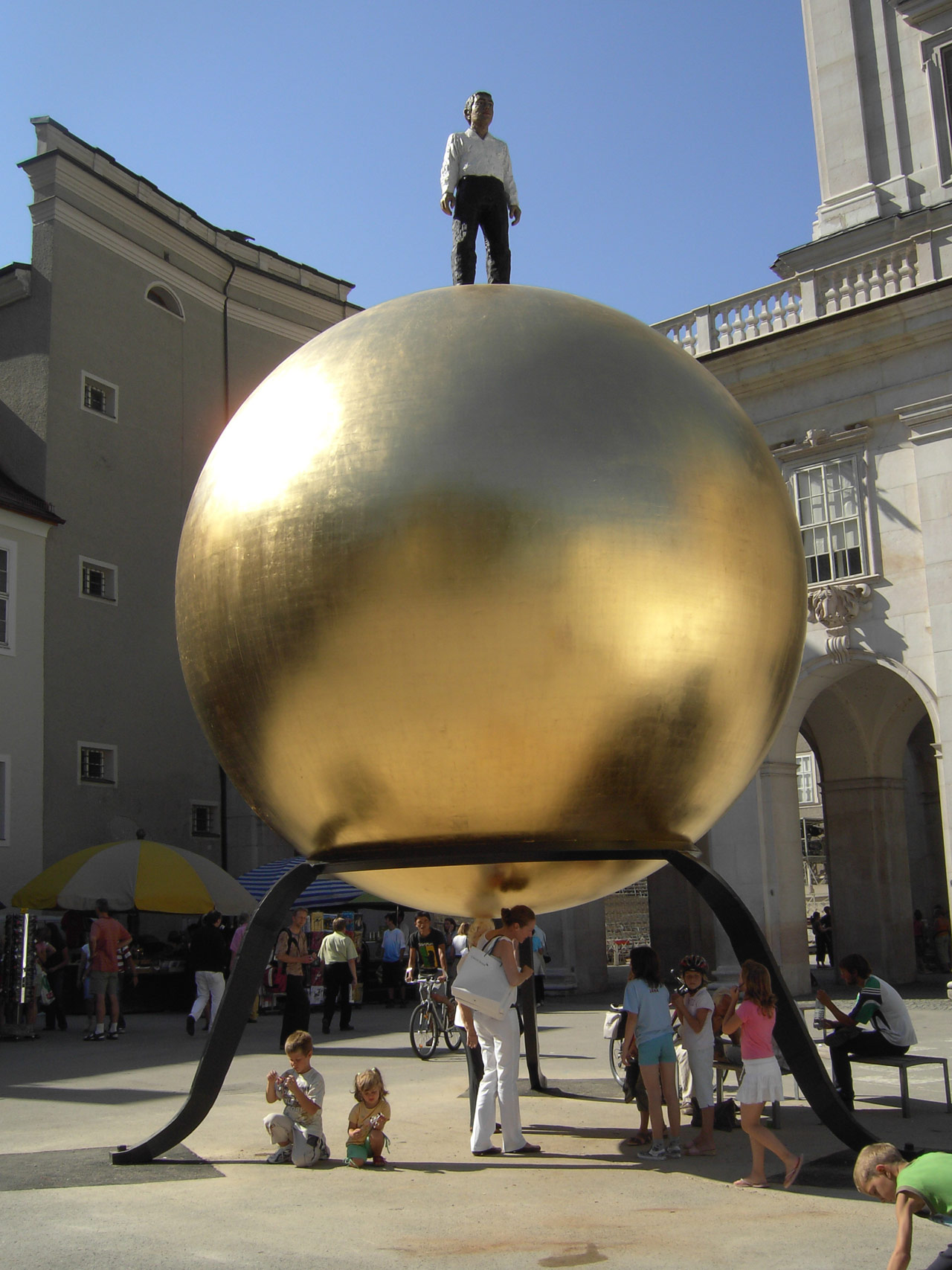
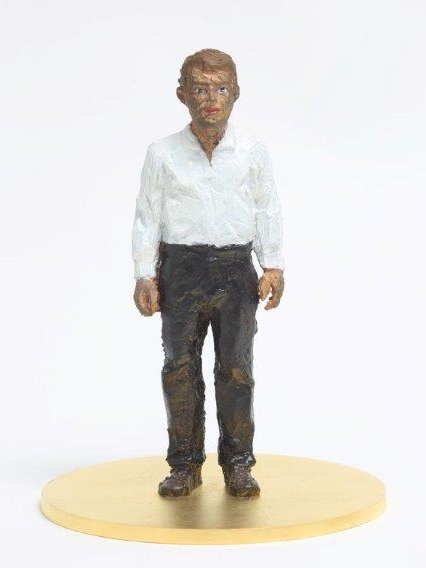
The so-called "Balanceakt" in Berlin is in no way inferior to the distinctive design of the Salzburg bronze. The wonderful playful display is placed in front of the Axel-Springer-Hochhaus in Berlin-Kreuzberg. It consists of a man wearing black pants and a white dress shirt who is balancing on an original piece of the Berlin Wall, as well as eleven additional original pieces surrounding him. The monument is a reminder of the German reunification and the Fall of the Wall in particular. Not leaning to either side, the figure has a neutral, non-judgmental approach to the Fall and reunification. Including the piece of the Wall, the bronze stands 5,70 meters high and weighs 750 kilograms. It was revealed on May 25th 2009 in celebration of the 50th anniversary of the groundbreaking of the Axel-Springer-Haus.
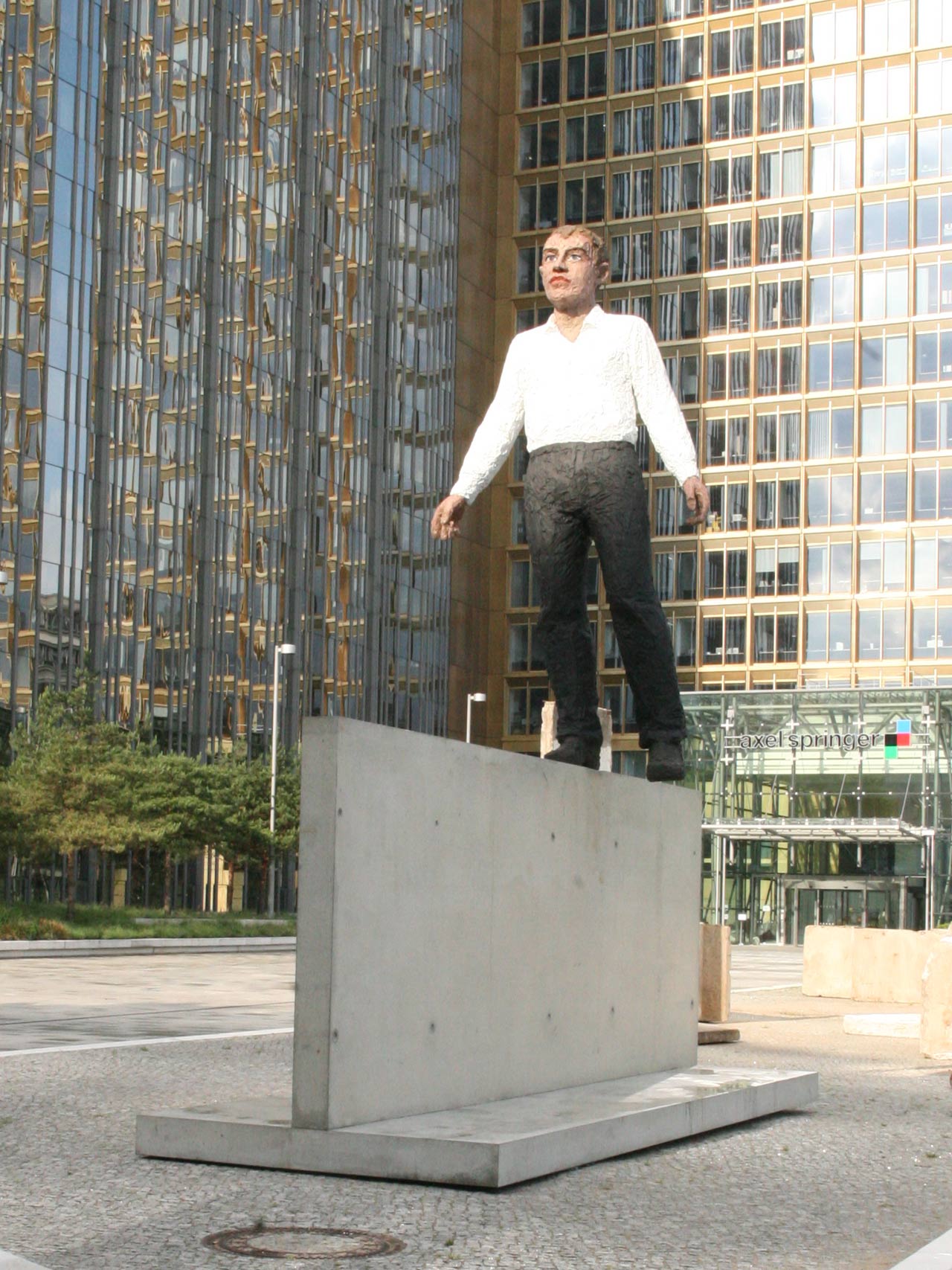
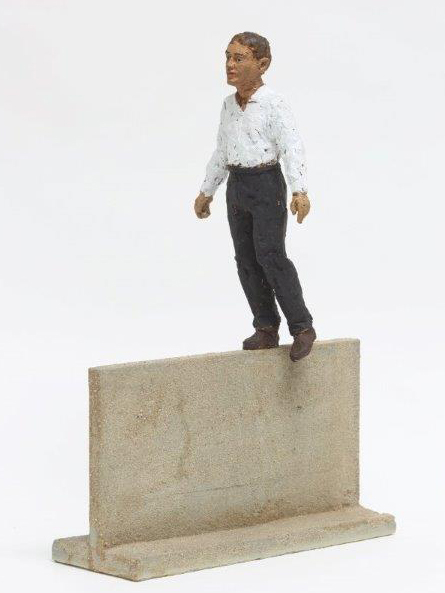
Another prominent, impressive artwork was erected in front of the training center and forum of H"rmann company in Steinhagen. "Der gro"e Kniende" is 5,60 meters tall and weighs almost three tons. The bronze cast is placed on a 2x2 meter concrete pedestal and was built in 2015 in front of this architectural masterpiece in Steinhagen. Originally designed as a competition entry for the Monument to Freedom and Unity 2010 in Berlin and honored as the winning design, the kneeling pose of the man symbolizes both humility and pride.
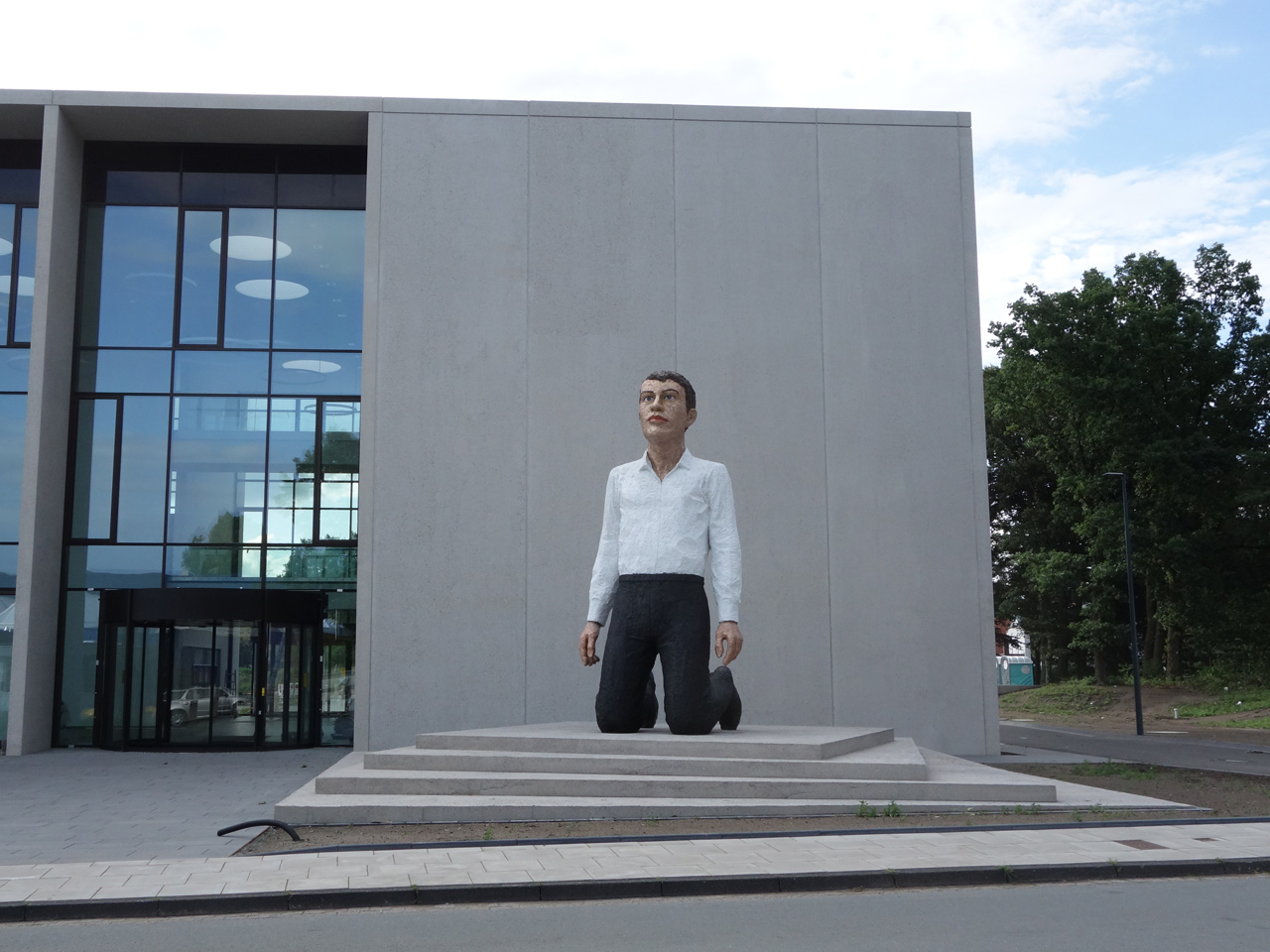
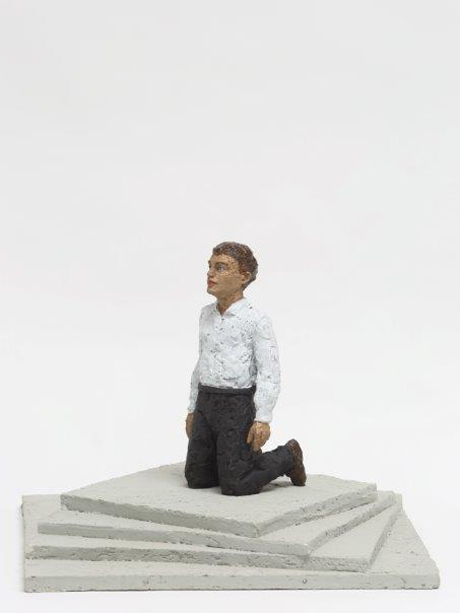
The first display of a prominent person in the public space as well as a corresponding bronze edition were created in 2013 - the Richard Wagner monument in Leipzig. Balkenhol"s portraiture of Richard Wagner was placed on a pedestal designed by Max Klinger 100 years prior, and it is now located to the northwest of the Leipzig city center in the green space of Goerdelerring, which had already been planned in the beginning of the 20th century. Relaxed, with his right arm resting on his waist, a young Wagner is gazing into the distance: casually, carefree and hopeful. It is a life-sized, colorized Wagner who had just written his first opera and whose career had not yet started. Behind him towers the shadow of a 4,20-meter-tall, dark patinated silhouette. He had wondered how to approach Wagner"s pathos, Balkenhol stated. His solution turned out to be exactly what the sculpture depicts: self-transcendence. A small man standing in front of his great work that rises above him.
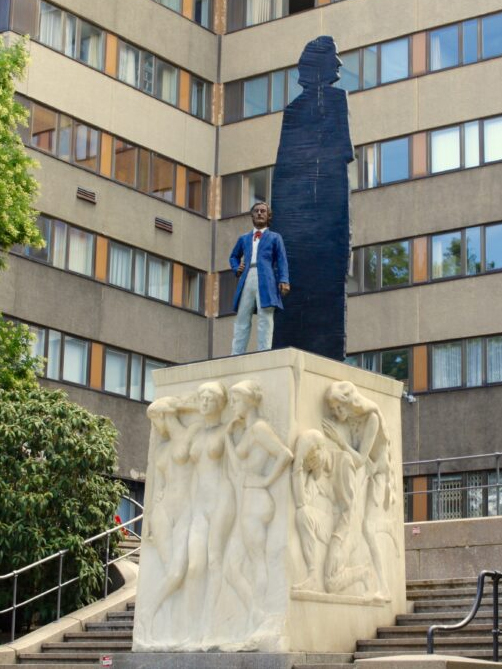
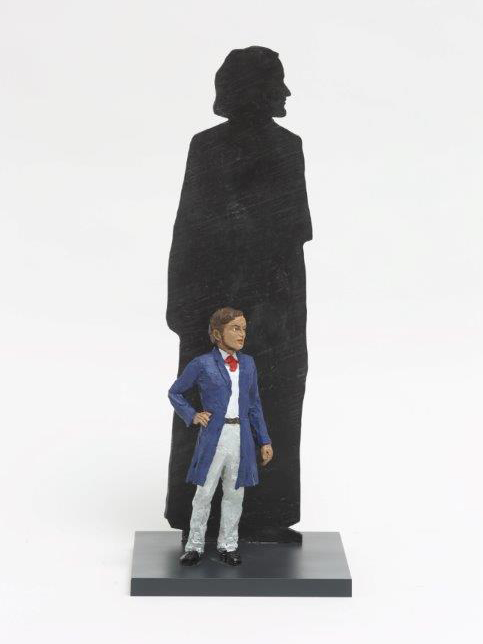
In 2014, Stephan Balkenhol was accorded the honor of being allowed to portrait Jean Moulin, the French freedom fighter who was tortured and murdered by the Gestapo. Bestowing this privilege upon a German artist was a grand gesture of reconciliation of the city of Metz as well as an acknowledgement of Stephan Balkenhol as an artist, reflecting his good reputation in France. For a long time, Stephan Balkenhol has been living and working in Mei"enthal and his close connection to France dates back to his childhood. The monument of this hero of the French Resistance, Jean Moulin, is located in Metz train station and serves as another instance of a portraiture of an exceptional historical character.
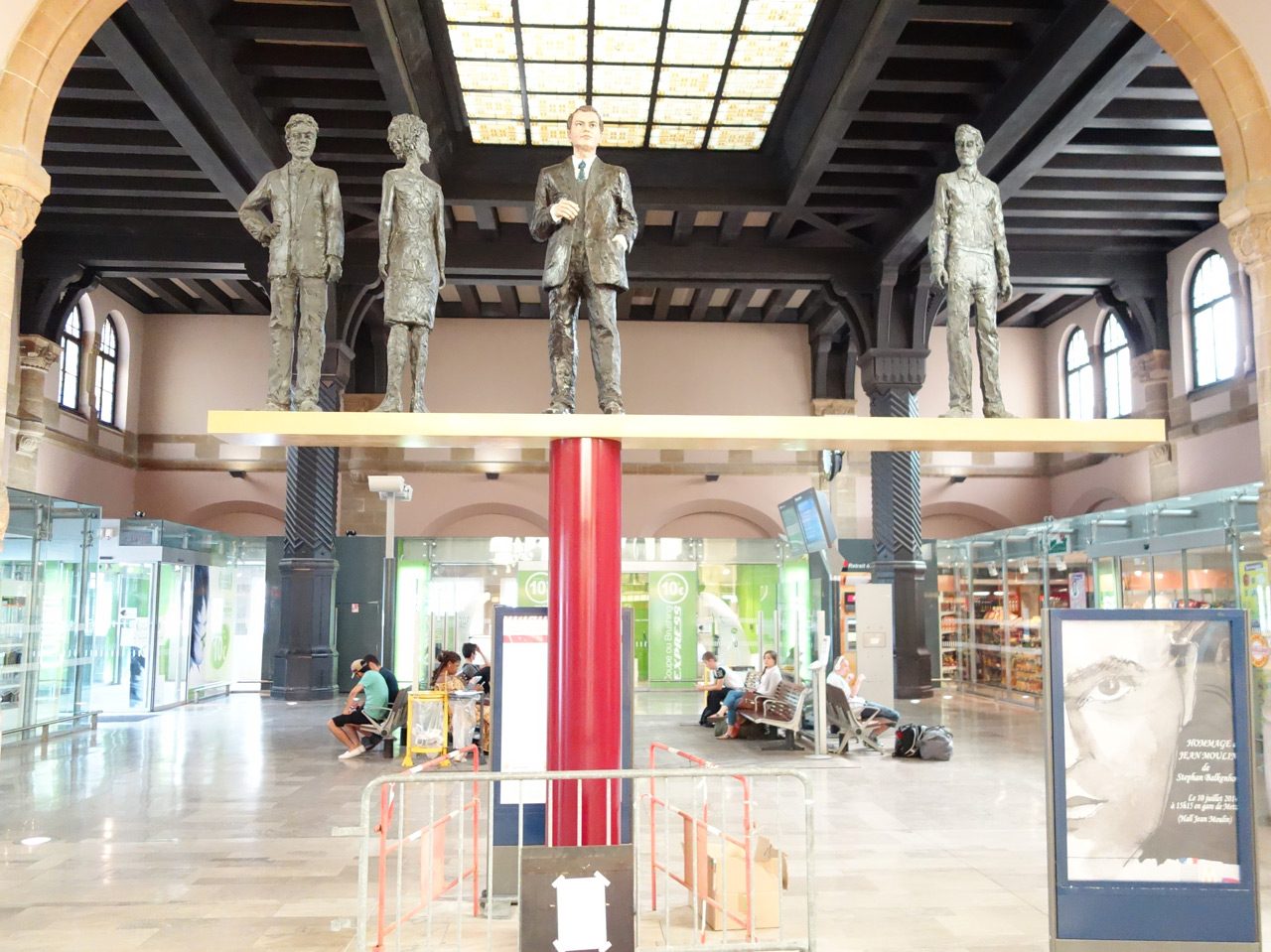
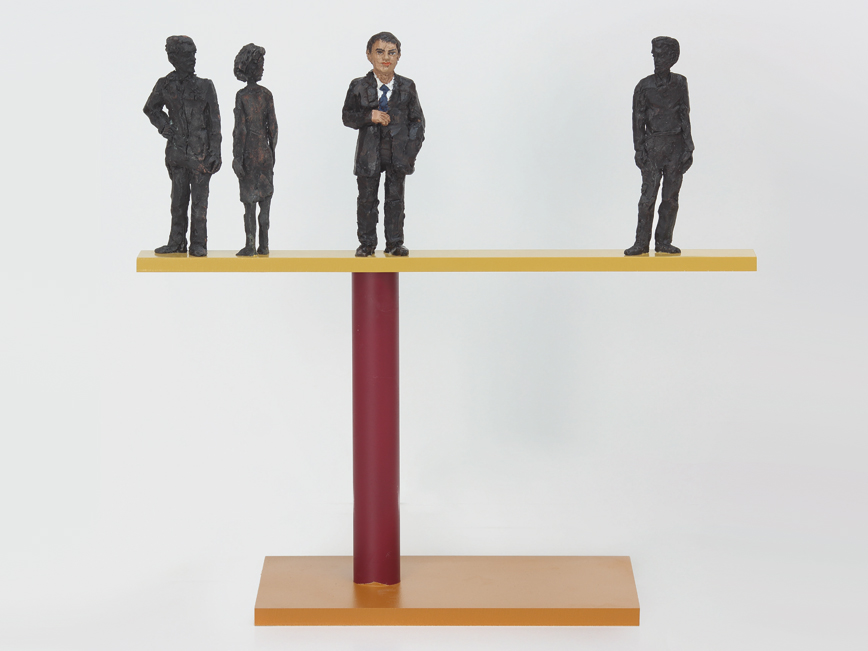
"It is not only an homage to Jean Moulin, but a token of friendship between Germany and France," Balkenhol said. So as not to obstruct the daily procedures in the train station, Balkenhol placed his sculpture on a column at a height of 2,70 meters. The other three figures can be seen as mere pedestrians or as an allusion to the "Army of Shadows", as the fighters of the R"sistance are also known. Moulin, who managed to unite the quarreling resistance groups and form one powerful force, is commemorated in France with numerous monuments. Metz, his official place of death, had hitherto been missing such a monument.
The so-called "Torontomann" has traveled far. As the name suggests, his new home is found in-between the skyscrapers in the beautiful Canadian metropolis of Toronto. The sculpture was commissioned by the construction company Camrost Felcorp. With a height of almost ten meters and its eye-catching colorful cubes, it is a wonderful addition to the landscape of the city.
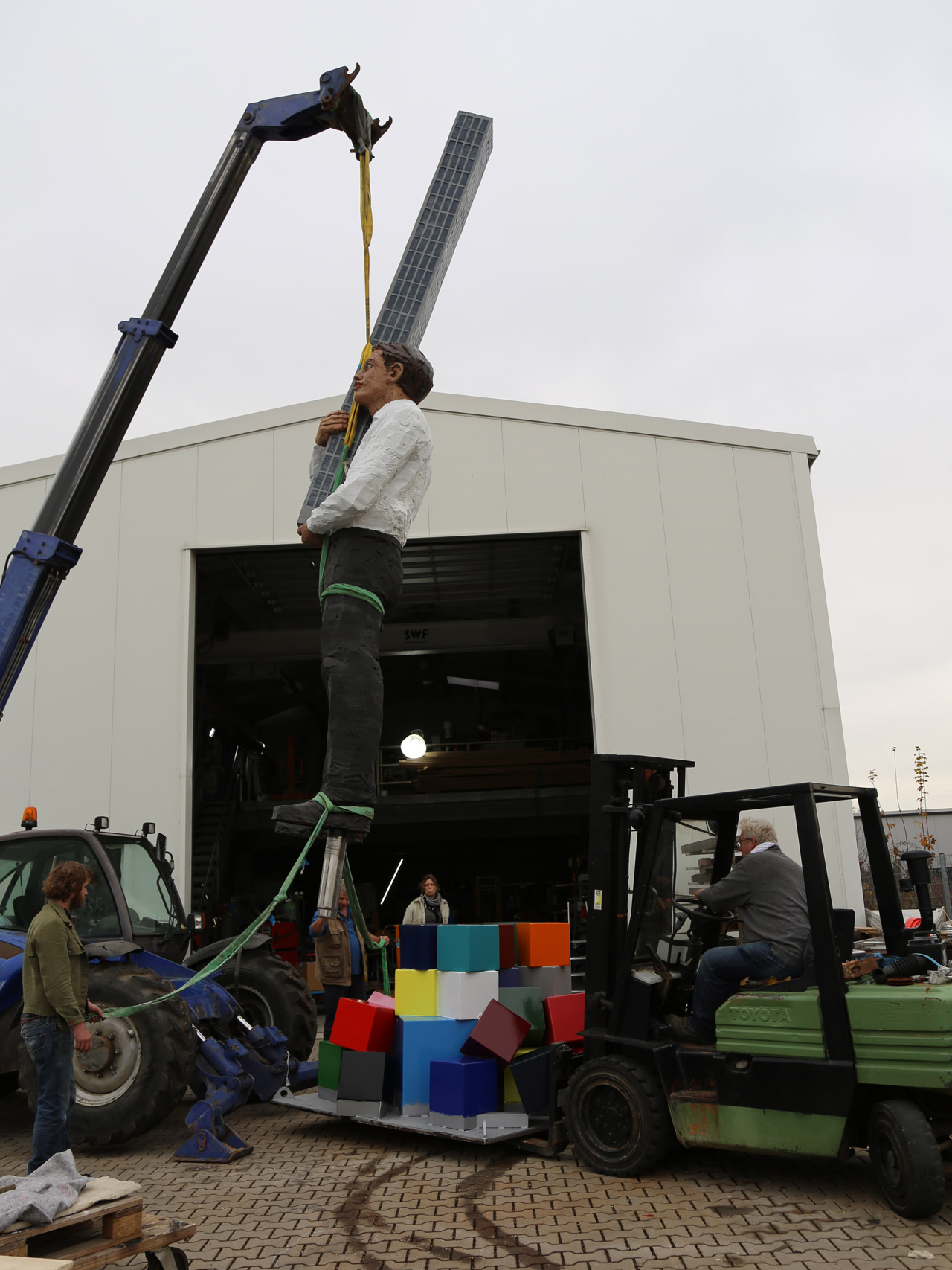
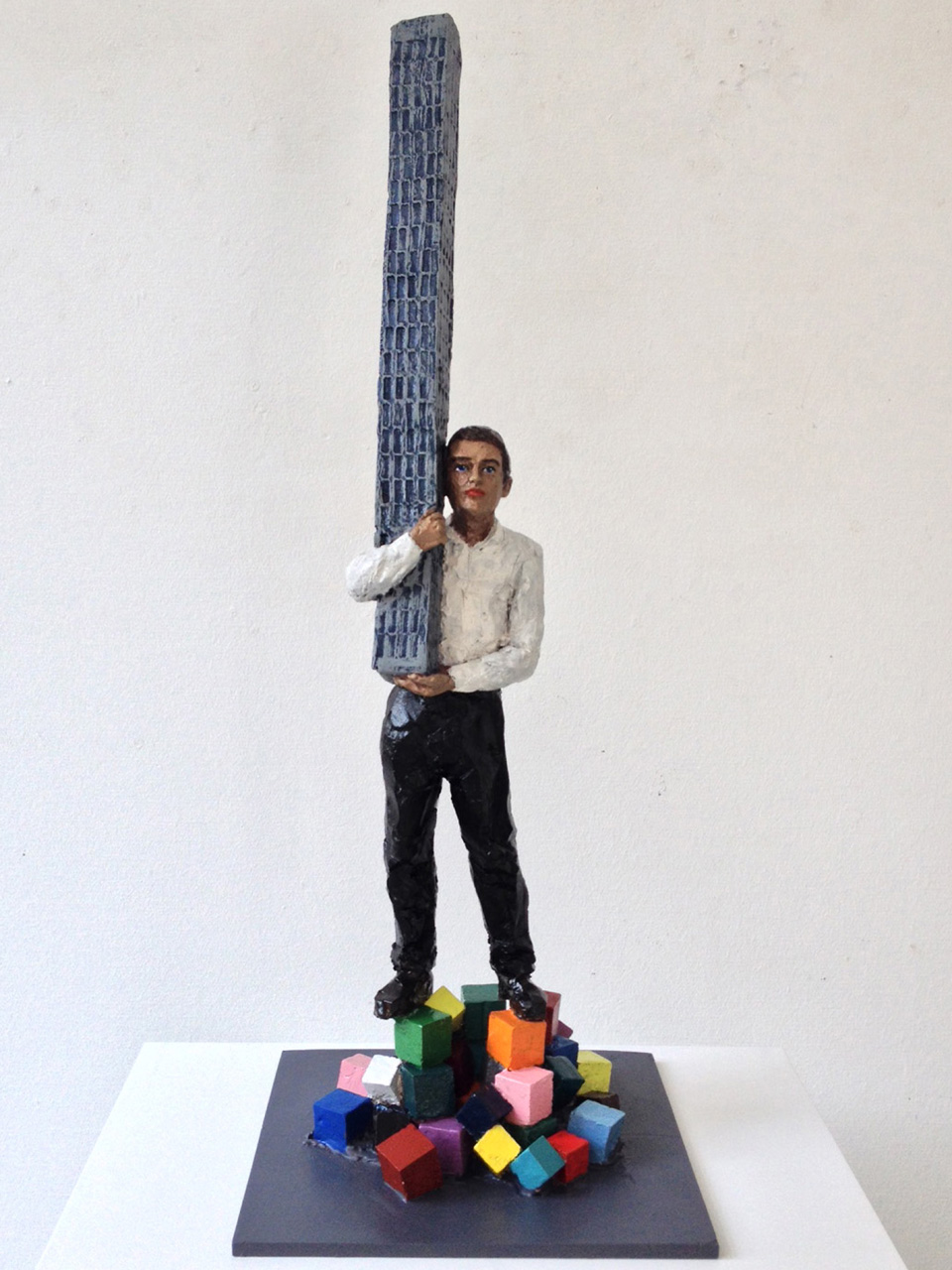
Erected in 2018, the "Mann mit F"llhorn" stands on a golden sphere in the water in the heart of Sneek, against the picturesque backdrop of the historical water port. The statue alludes to Fortuna, the goddess of fortune and patroness of cities, families and peoples. The overflowing horn symbolizes the material wealth of anybody who is lucky enough to touch it. The golden sphere continuously rotates around itself, propelled by the water flowing out of the horn held by the statue. The water in the well represents elemental power. Any abundant fortune we may receive can just as easily be taken away by fate. Balkenhol"s fountain evokes connotations of wealth and misery which come and go, drawing an unpredictable parallel to human life " as erratic as the history of Sneek itself. "Fortuna"s Fountain" emerged from a project over the course of which a fountain was designed for each of the eleven cities of Friesland.
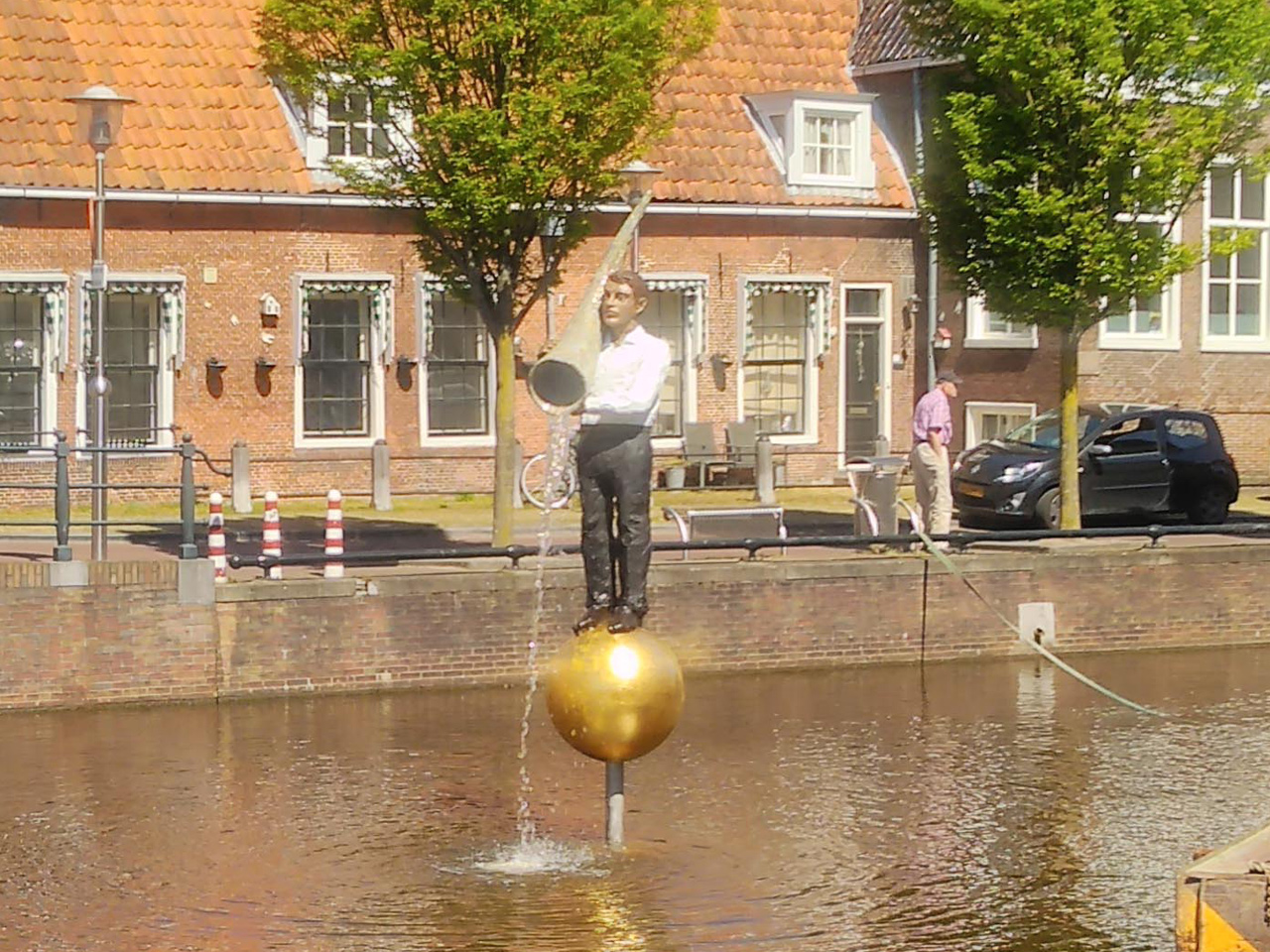
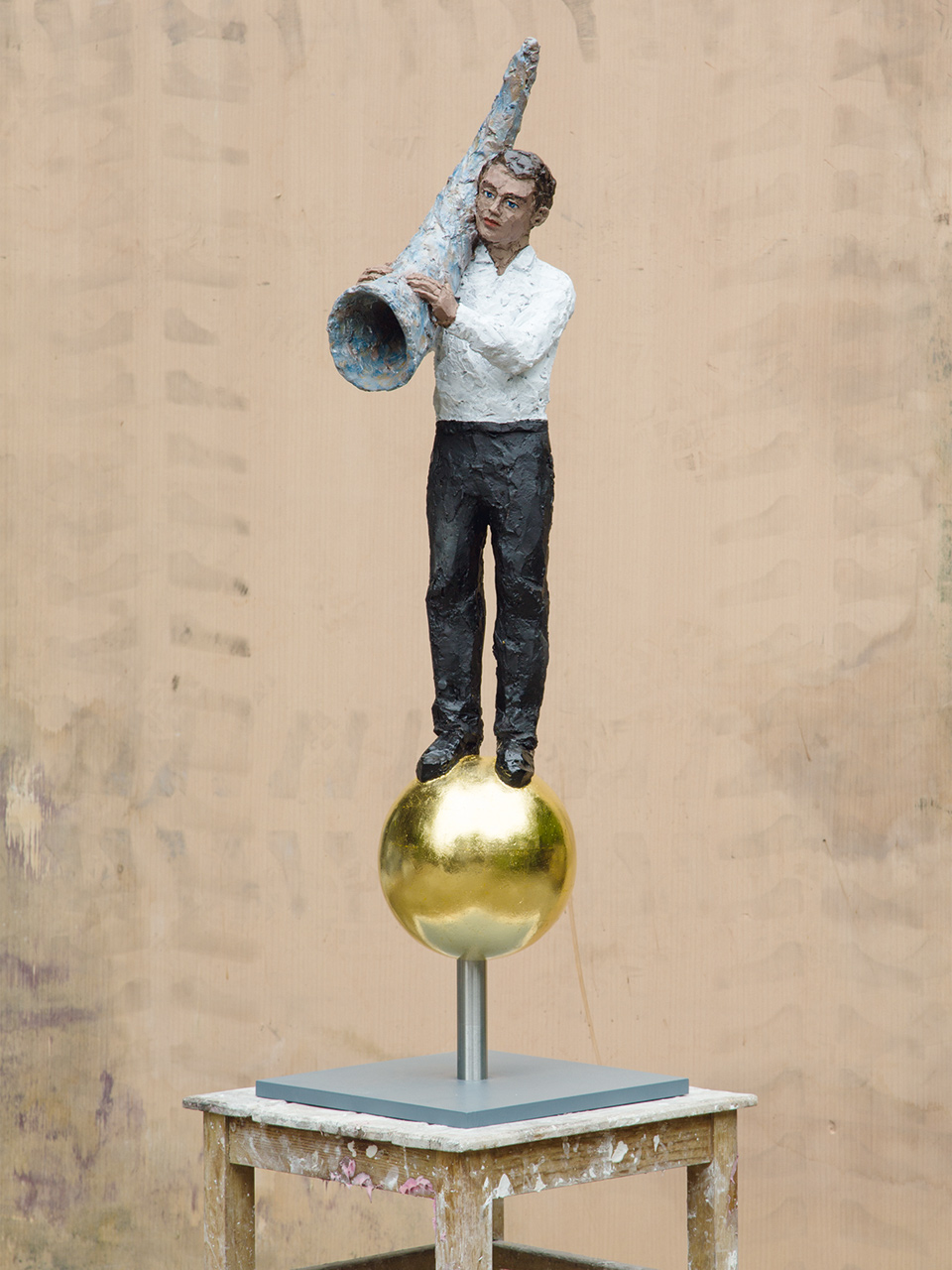
In 1997, a large wooden column sculpture by Stephan Balkenhol was erected on Senser Platz in L"rrach. However, the sculpture was damaged over time due to the weather conditions and had to be taken down and restored. Its relocation to a more suitable interior space was inevitable. As a loan of the Sammlung Deutsche Bank, it found a new home in the foyer of Burghof arts center, safe from wind and rain. The "M"nnle", as the man on the red column was lovingly called by the people of L"rrach, swiftly became a landmark of the city as well as a popular meeting point. Thus, its departure caused great sadness for the citizens. In response to this, Balkenhol created a weatherproof bronze replica of the original wooden sculpture on a column of stainless steel, so that Senser Platz could keep its iconic artwork. "The citizens felt this loss so deeply that they demanded a replacement," Balkenhol rejoices.
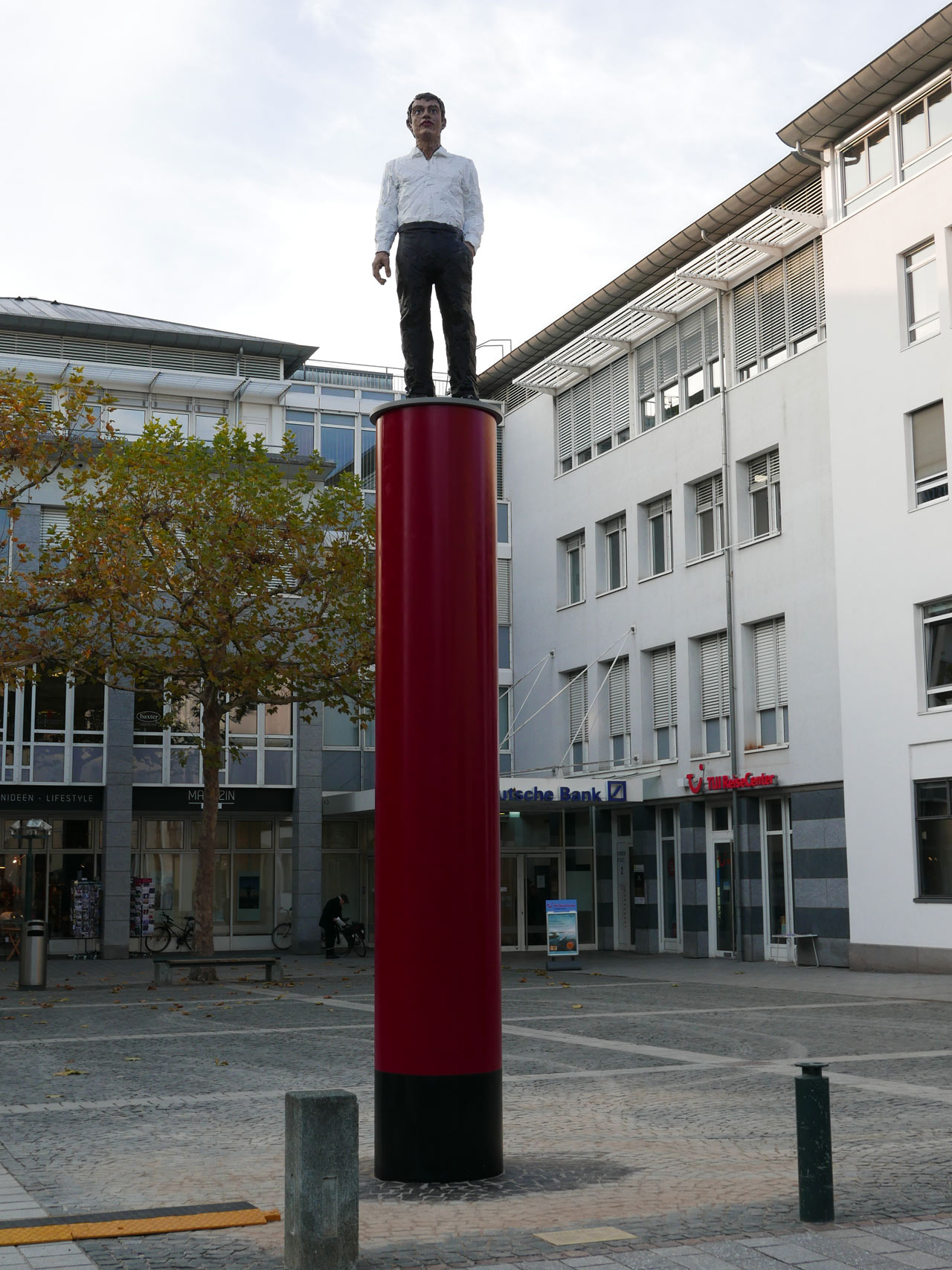
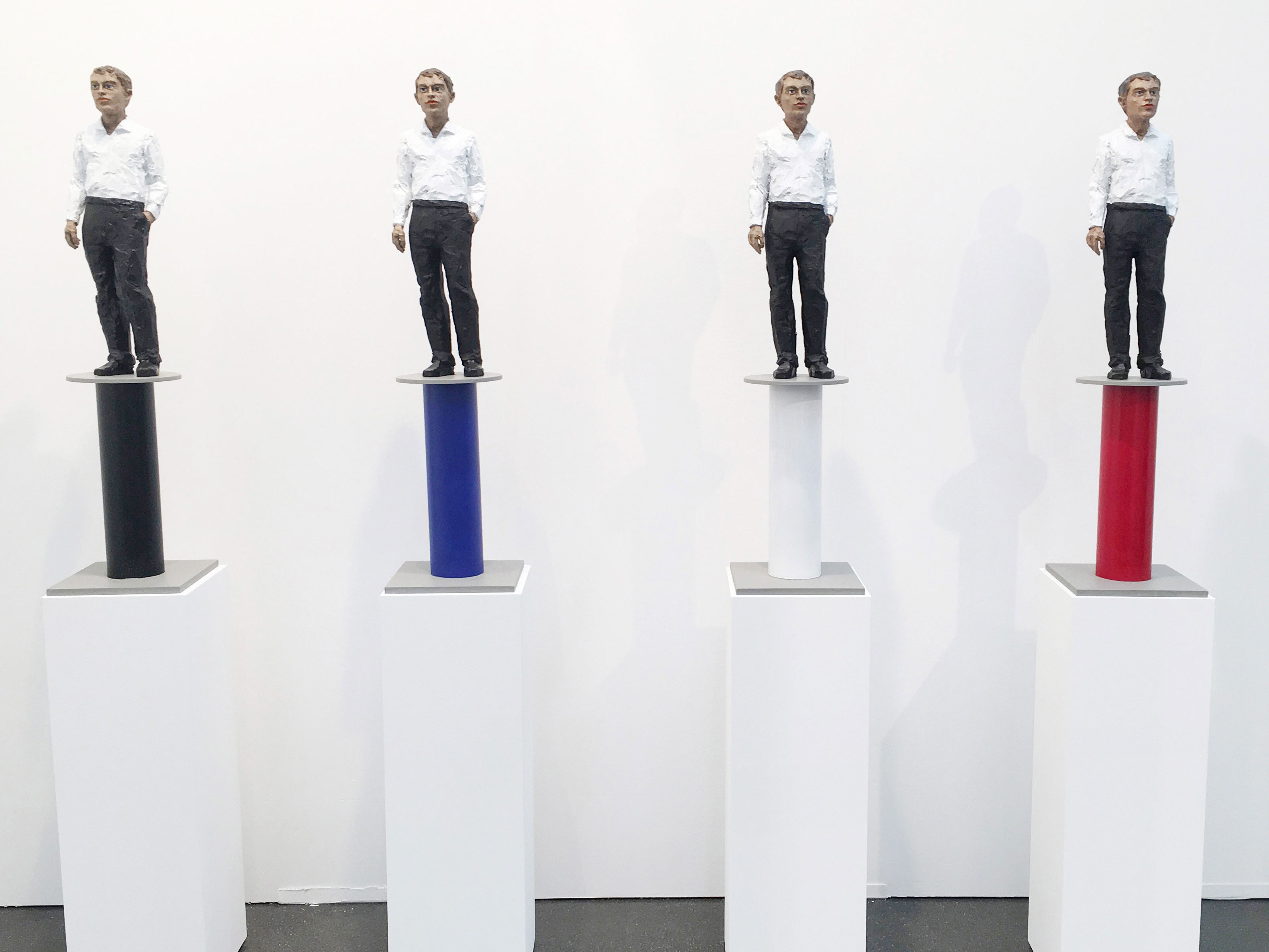
Since 2018, the Bonner Hofgarten has been home to the Macke monument with its famous colorful canopy, which Macke often used as a subject for his paintings. The 4,50-meter pavilion is open to the public and a popular meeting point for young and old people alike. Balkenhol"s "Hommage an August Macke" marks the fourth station of the "Kunstprojekt Bonn" by the Foundation for Art and Culture, which aims to create a "Walk of Modern Art" for the Federal City consisting of 17 artworks until 2030.
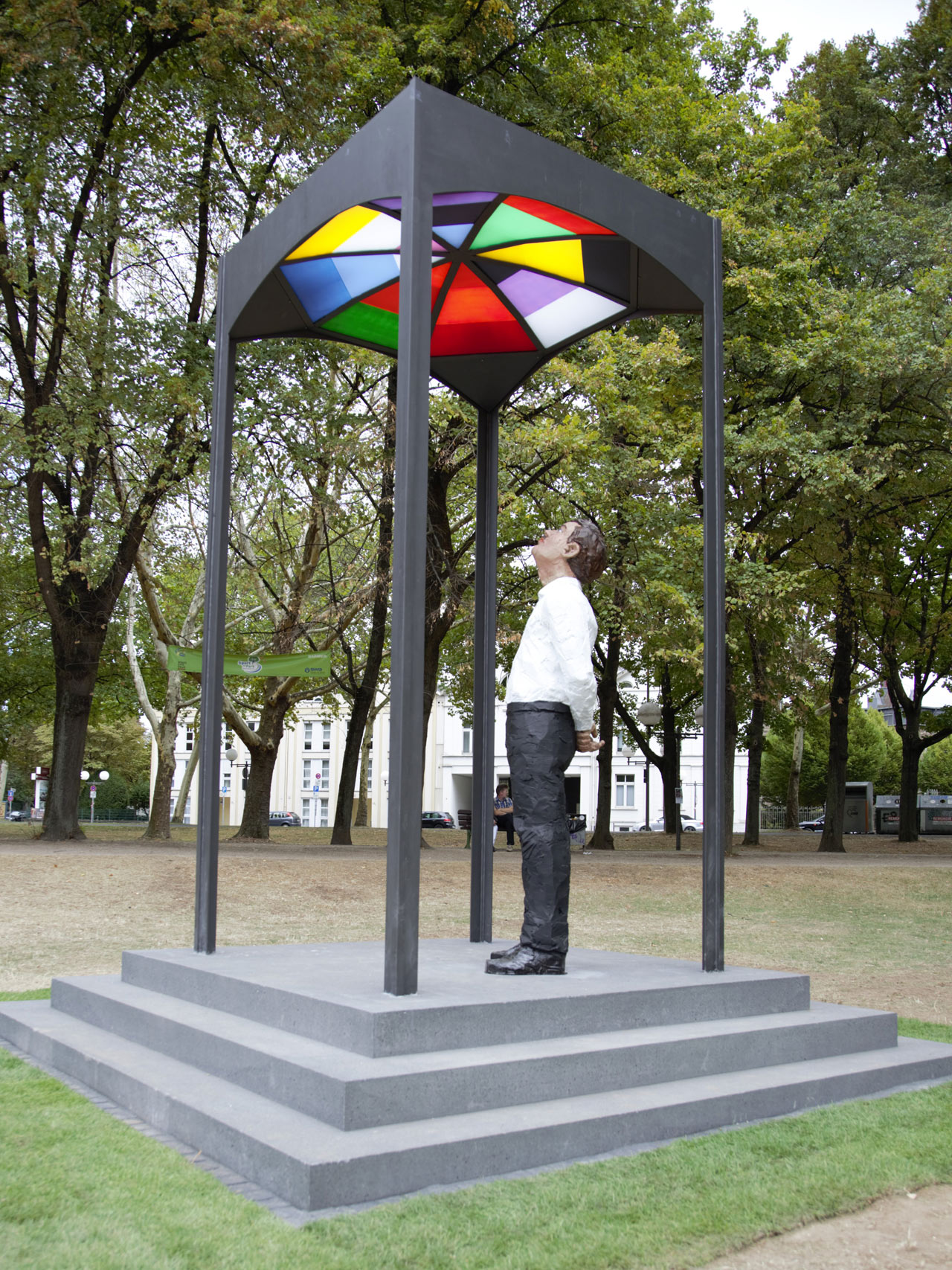
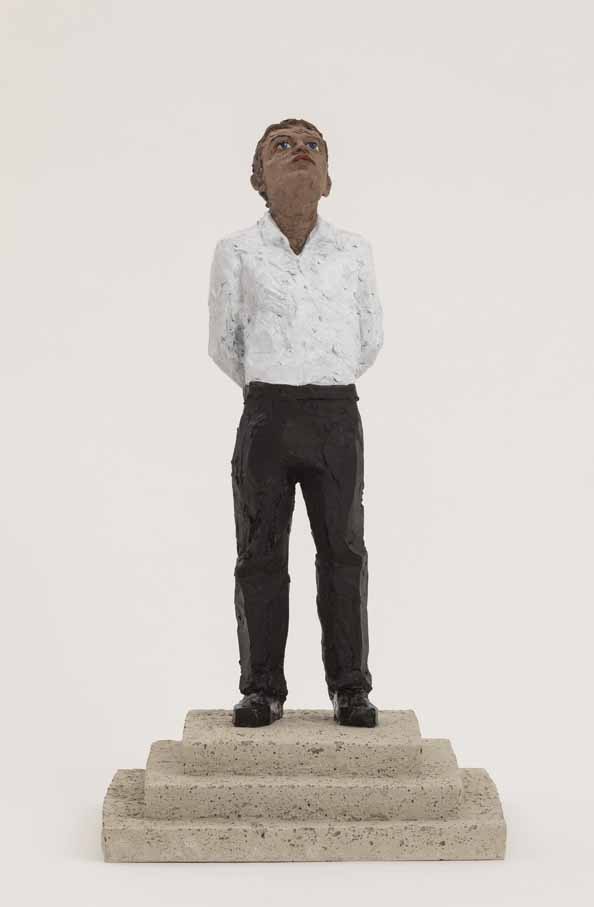
Apart from the bronze editions that were based on "grand" role models and to be displayed in the public, there have been multiple bronzes that were edited for charity or institutional events. The "Relief Mann", for example, was sold in 2004 in support of UNICEF as part of the project "Schmerztransformation". This bronze artwork was designed to be hung on walls, as were the two masks "Schwarz und Wei"", and references Stephan Balkenhol"s famous wood reliefs.
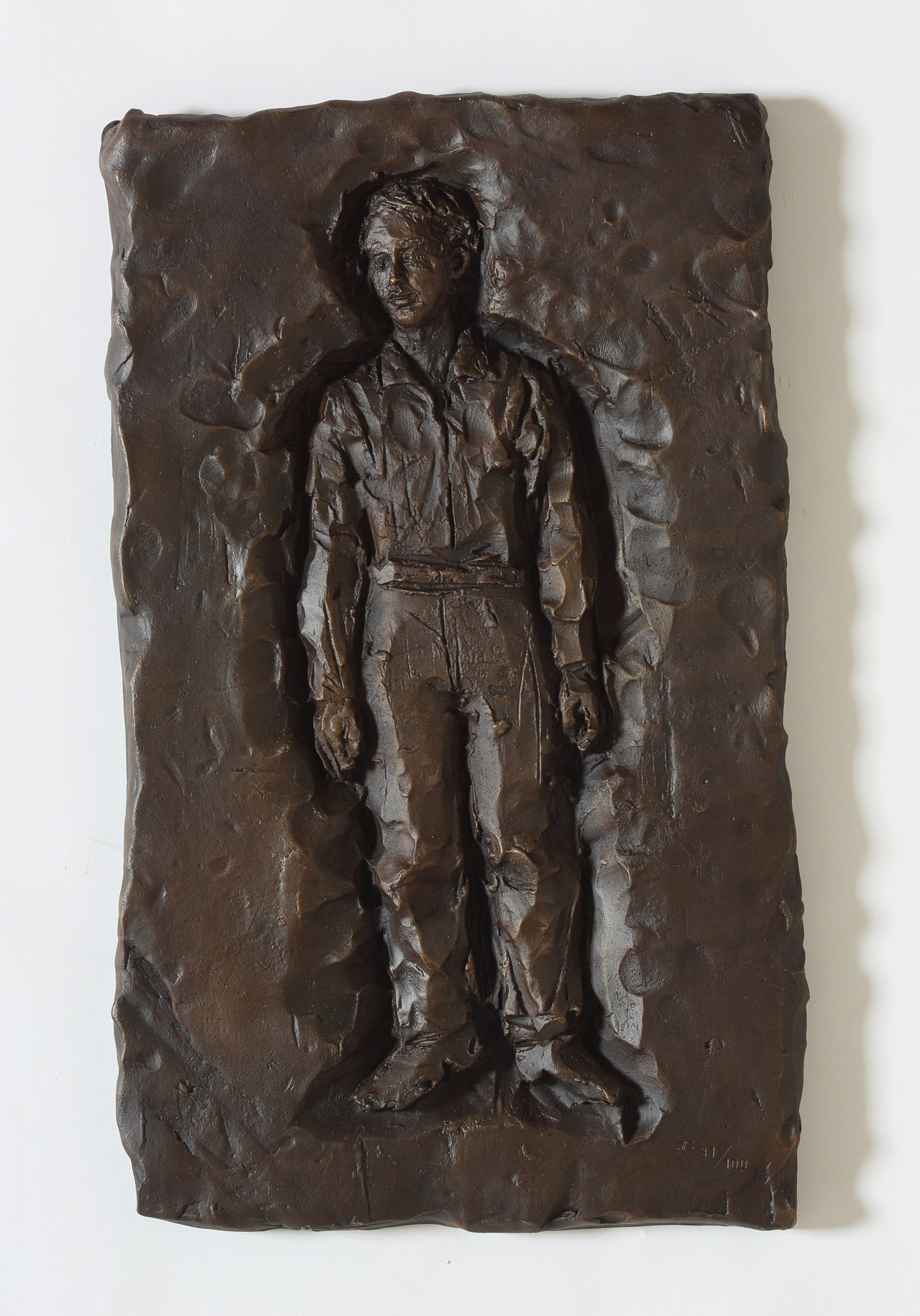
These black and white masks were created to finance the catalog of Stephan Balkenhol"s fantastic solo show in the Hamburg Deichtorhallen in 2008. Contrary to the "Relief Mann", a negative form, they were designed as positive forms.
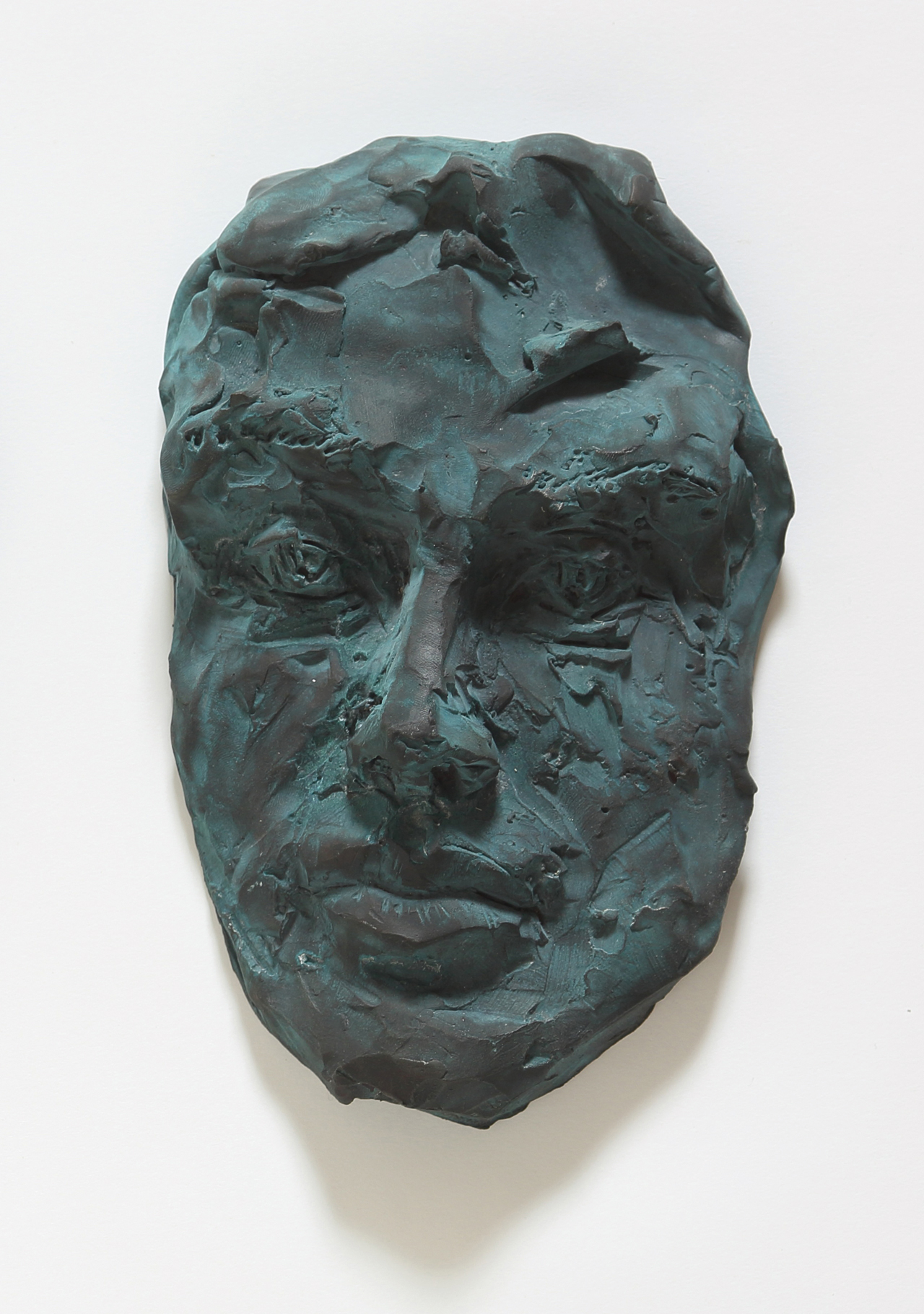
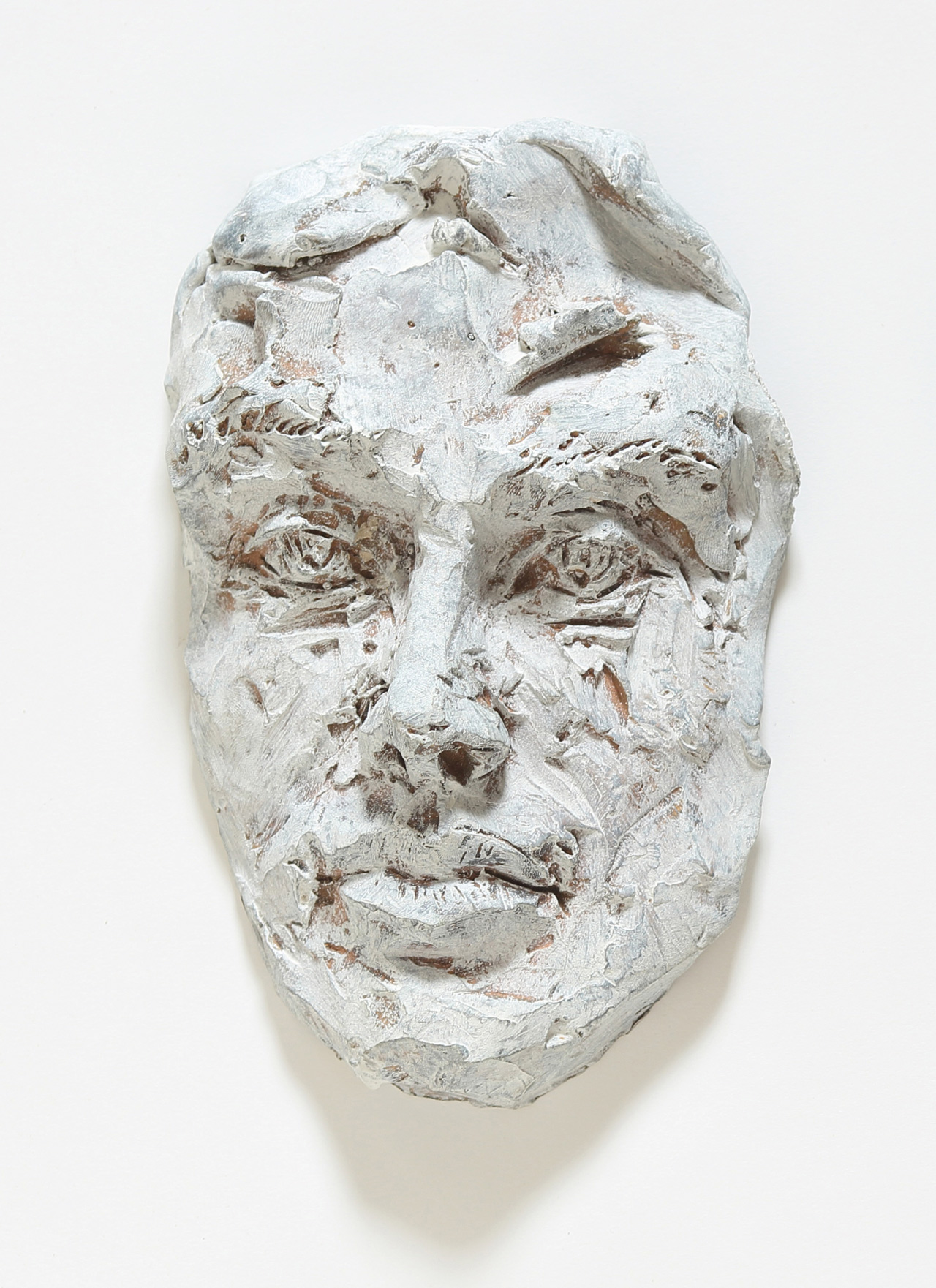
The "Bronzepaar" was the first display of man and woman in a sculpture. Unpainted and set on a plinth, it was used to collect money for a good cause by supporting a children"s help foundation. Only in 2020 should there be another artwork depicting both man and woman in the form of a "tanzendes Paar". This bronze is reminiscent of the famous and enticing series of wooden artworks, also titled "Tanzende Paare", which can be viewed at MMK Museum in Frankfurt.
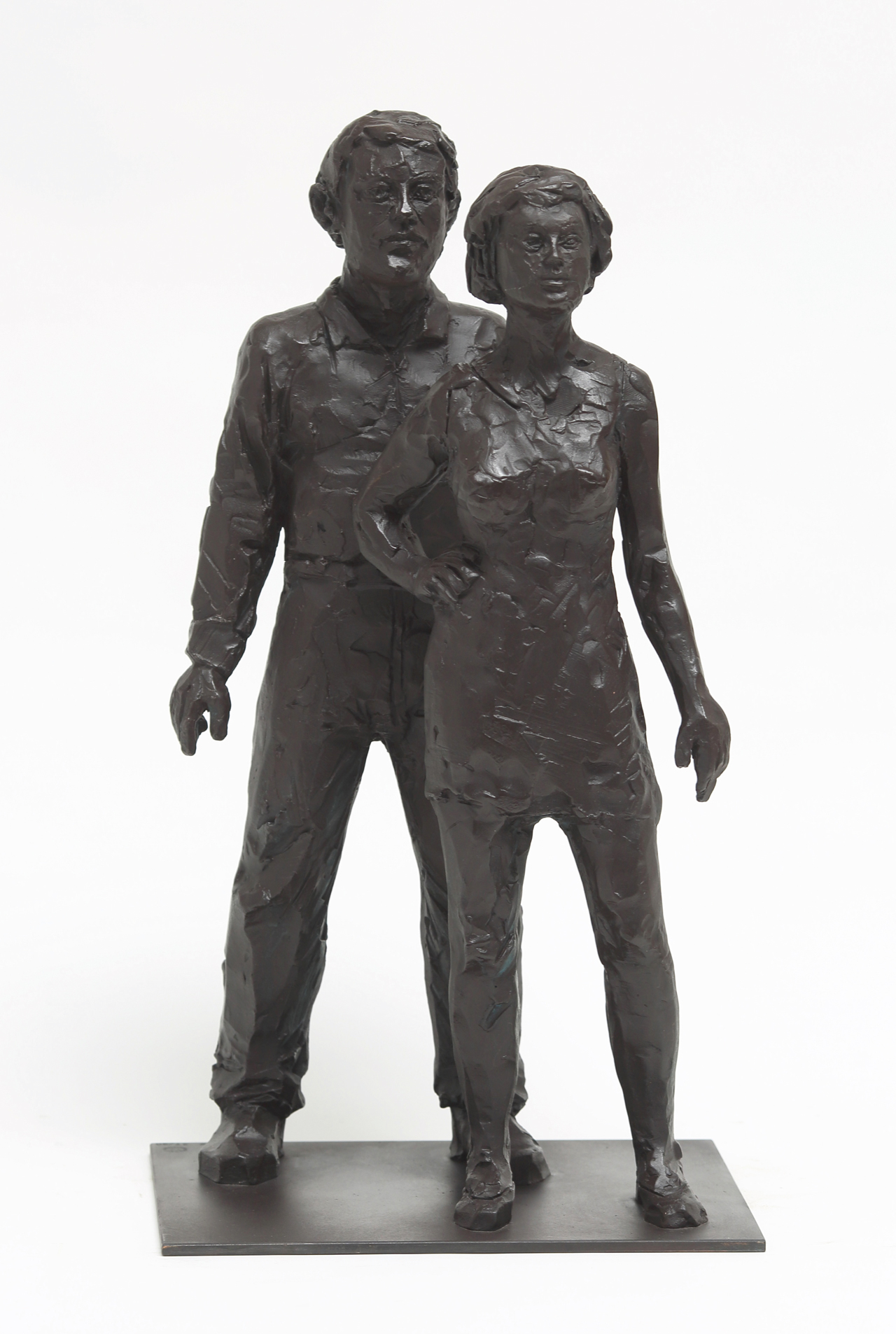
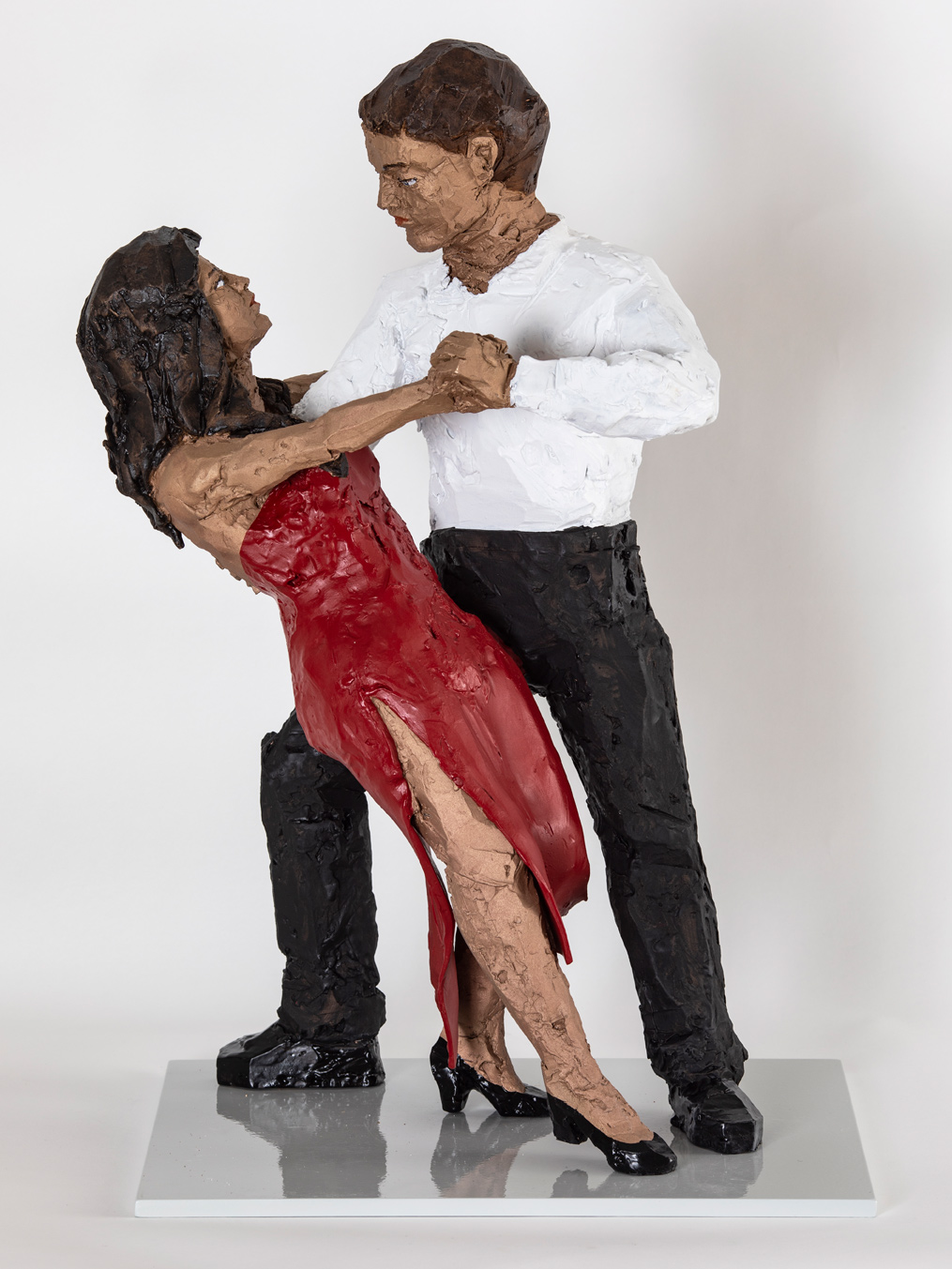
Another similarly expressive work followed in 2012 in the form of the so-called "Huckepack". It could either be representing a man with a child, or a father with his son. The subject of the work perfectly matches the occasion, as it generously supported the project "Ein Herz f"r Kinder meets United Internet for UNICEF". Significant contributors of this project were Alexander Mronz and Guido Westerwelle.
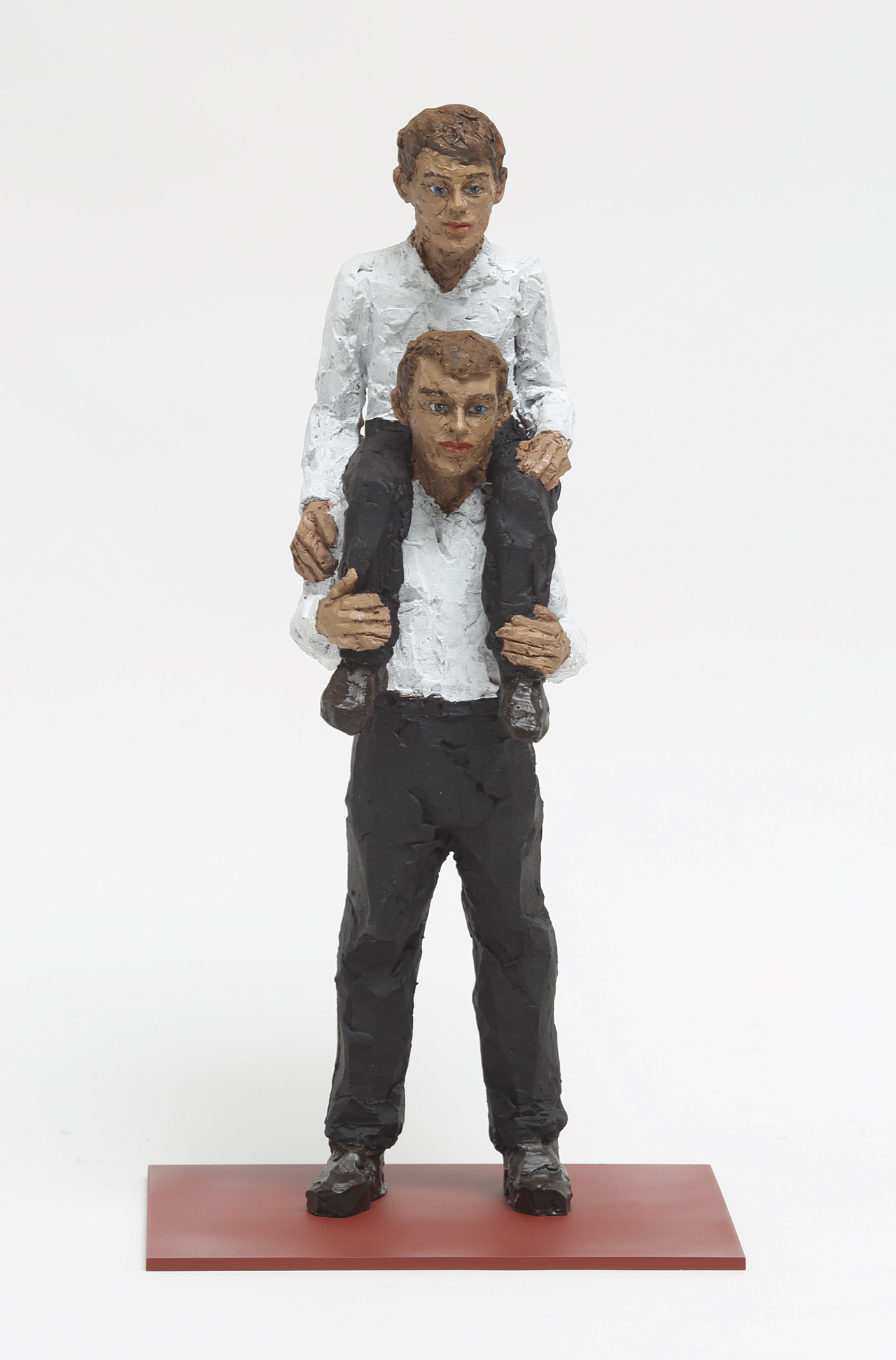
The "Atlas" carries the world on its shoulders and was created in 2017 for the organization "Ärzte ohne Grenzen". A considerable sum could be donated thanks to this beautiful and highly symbolic artwork.
